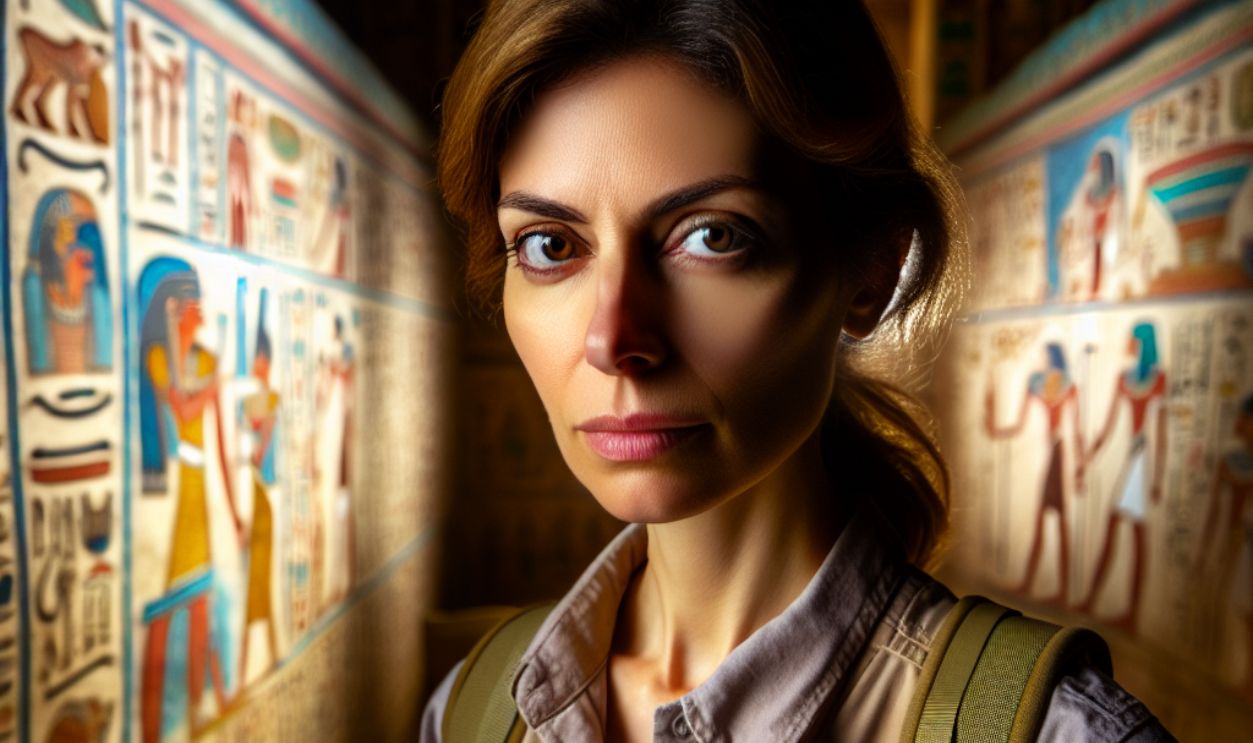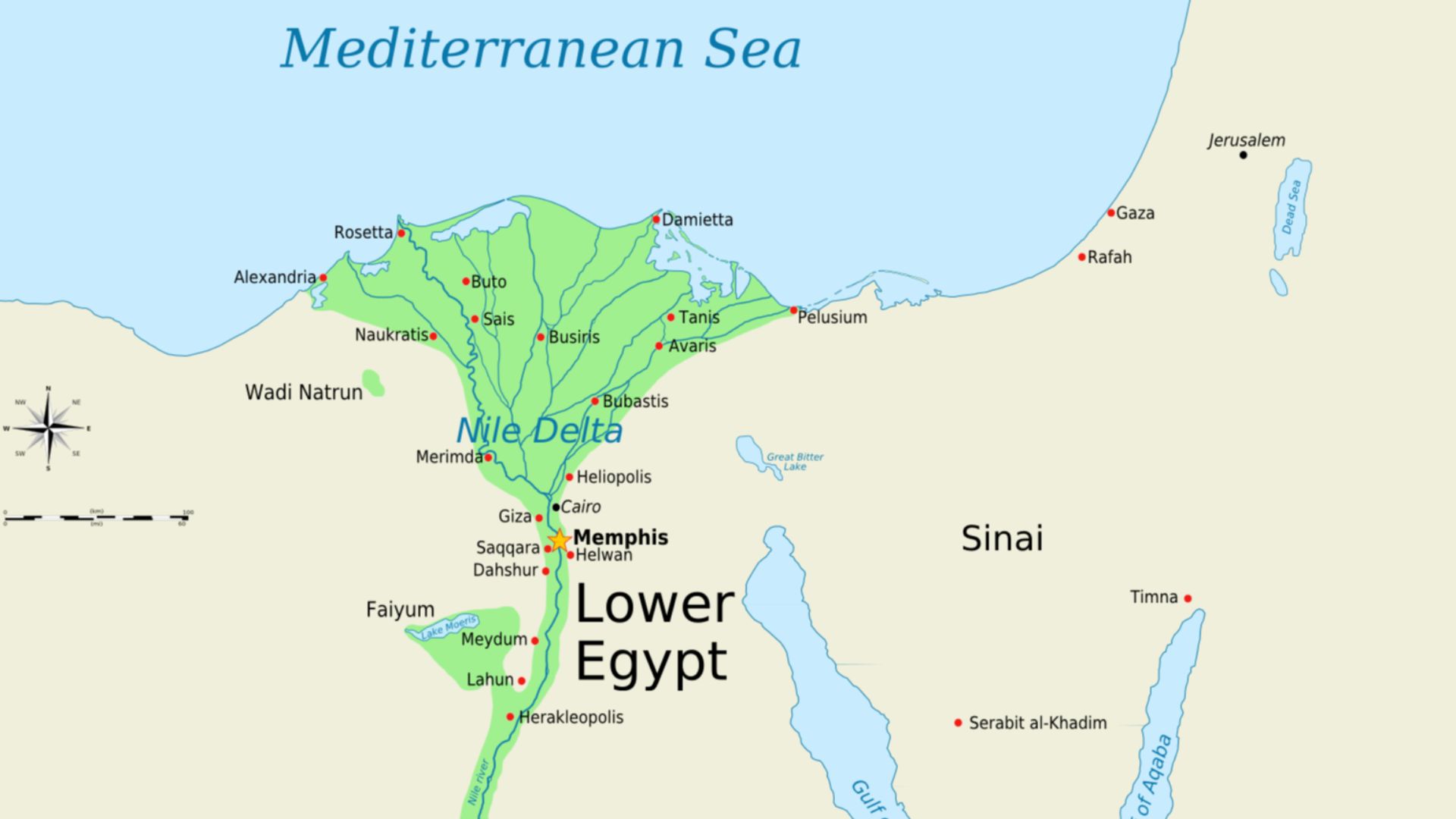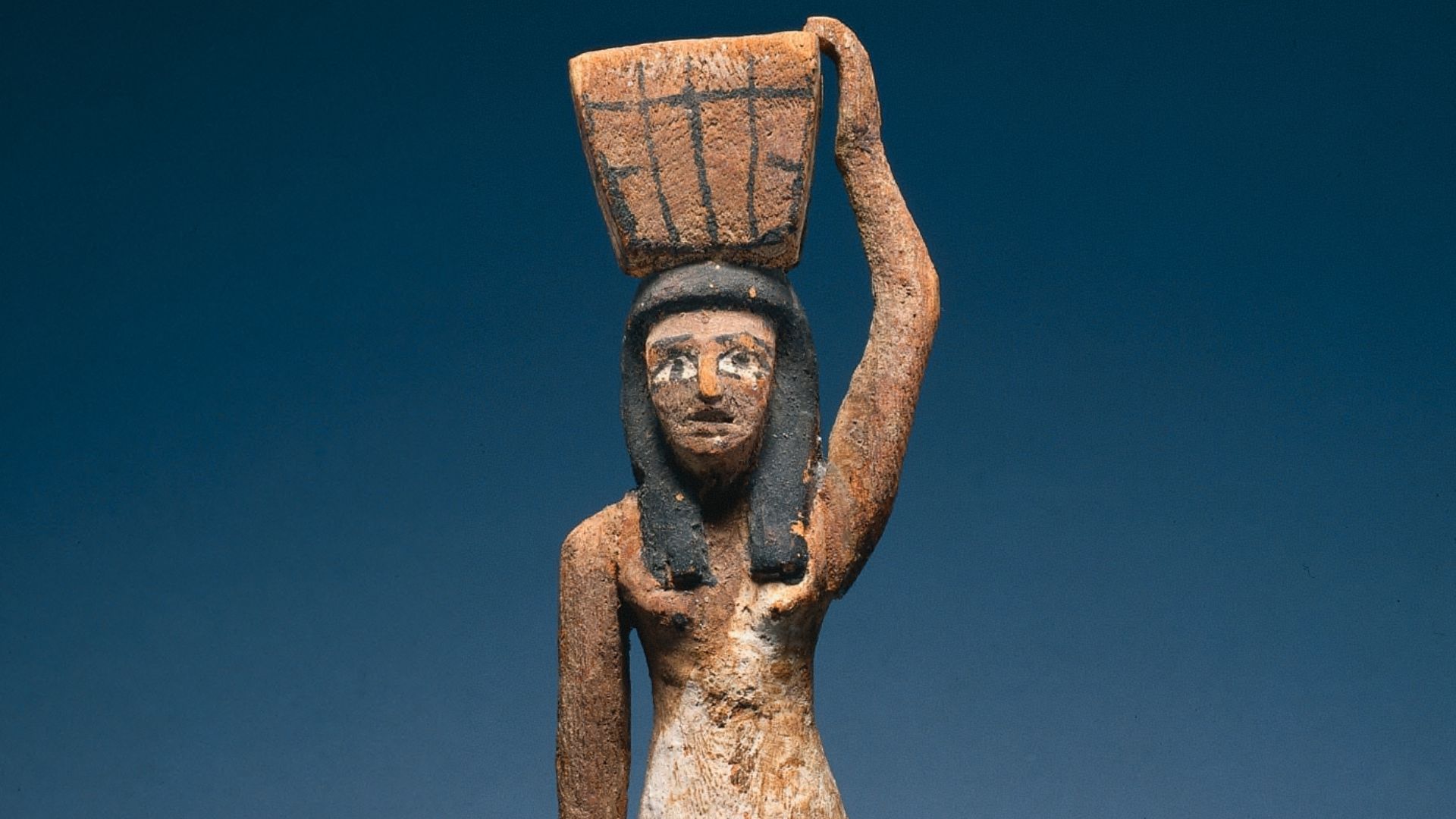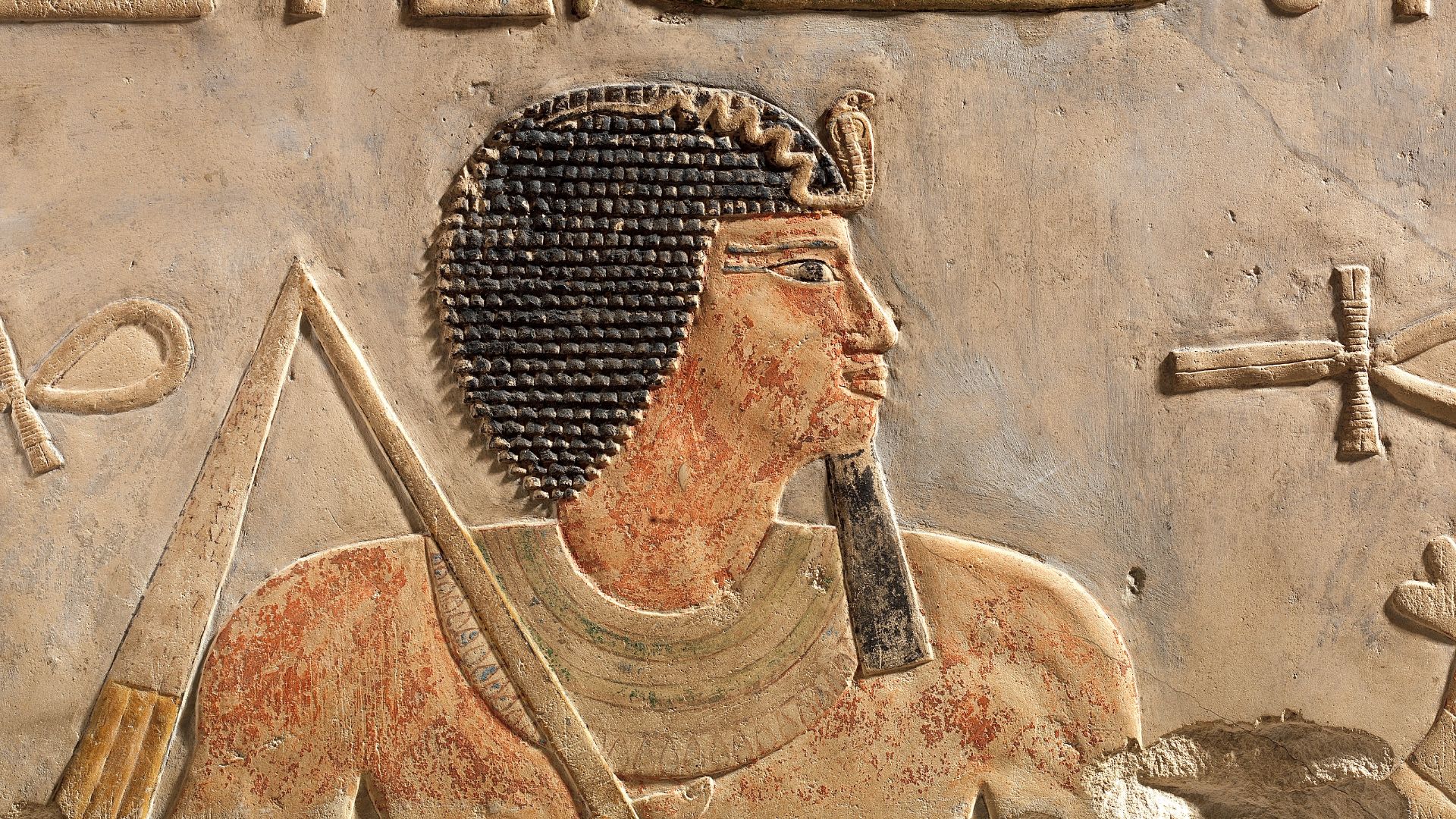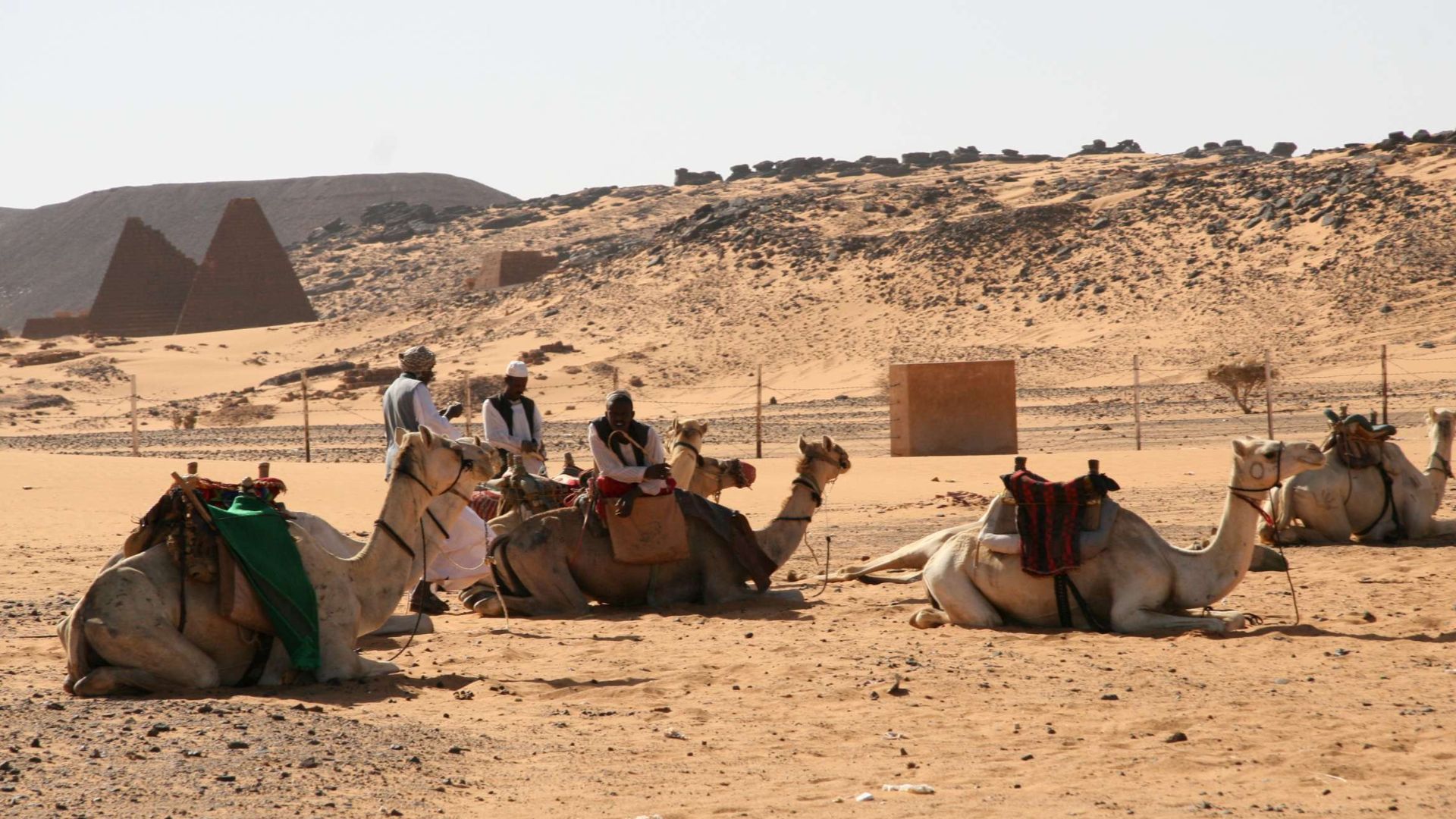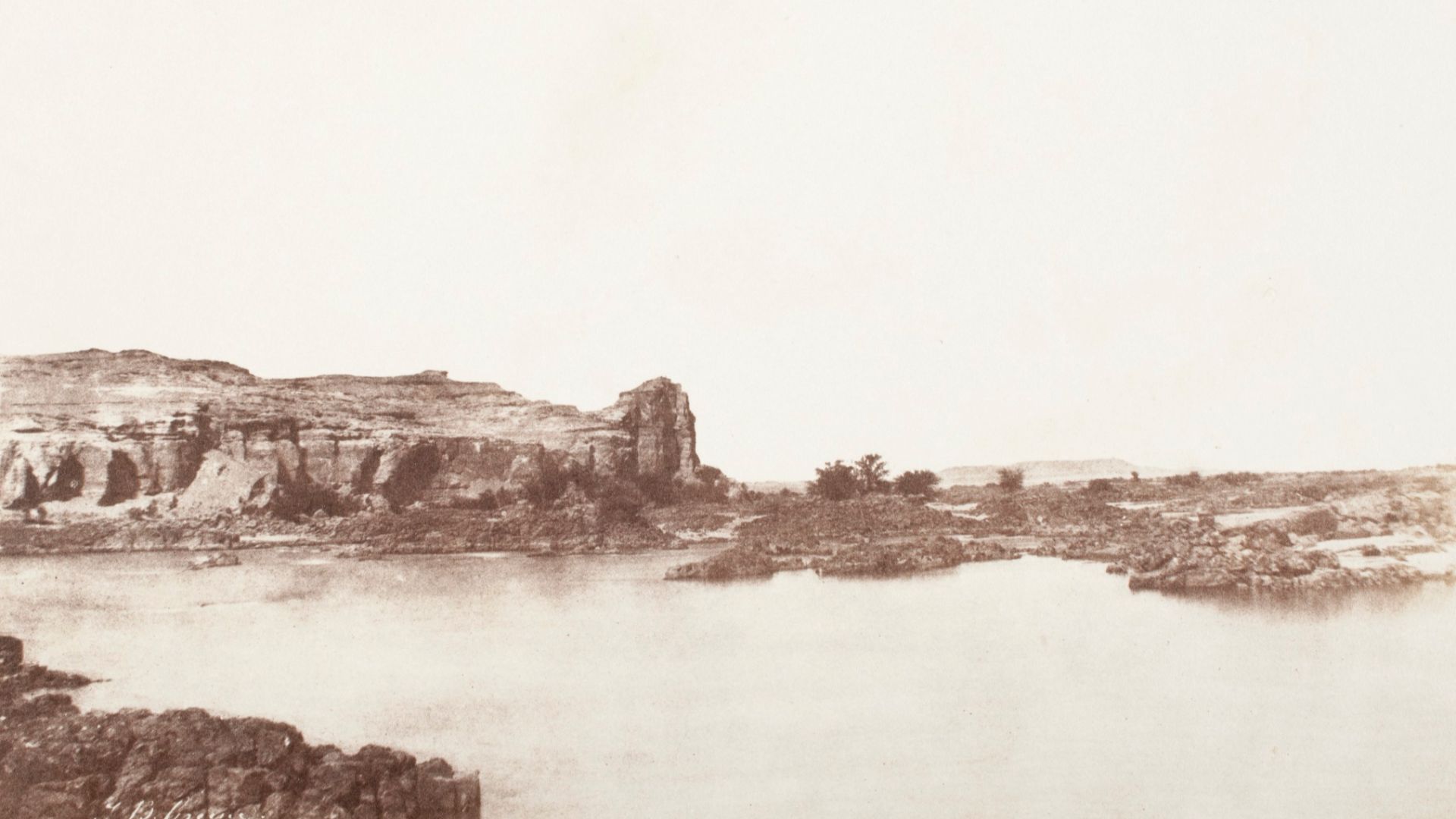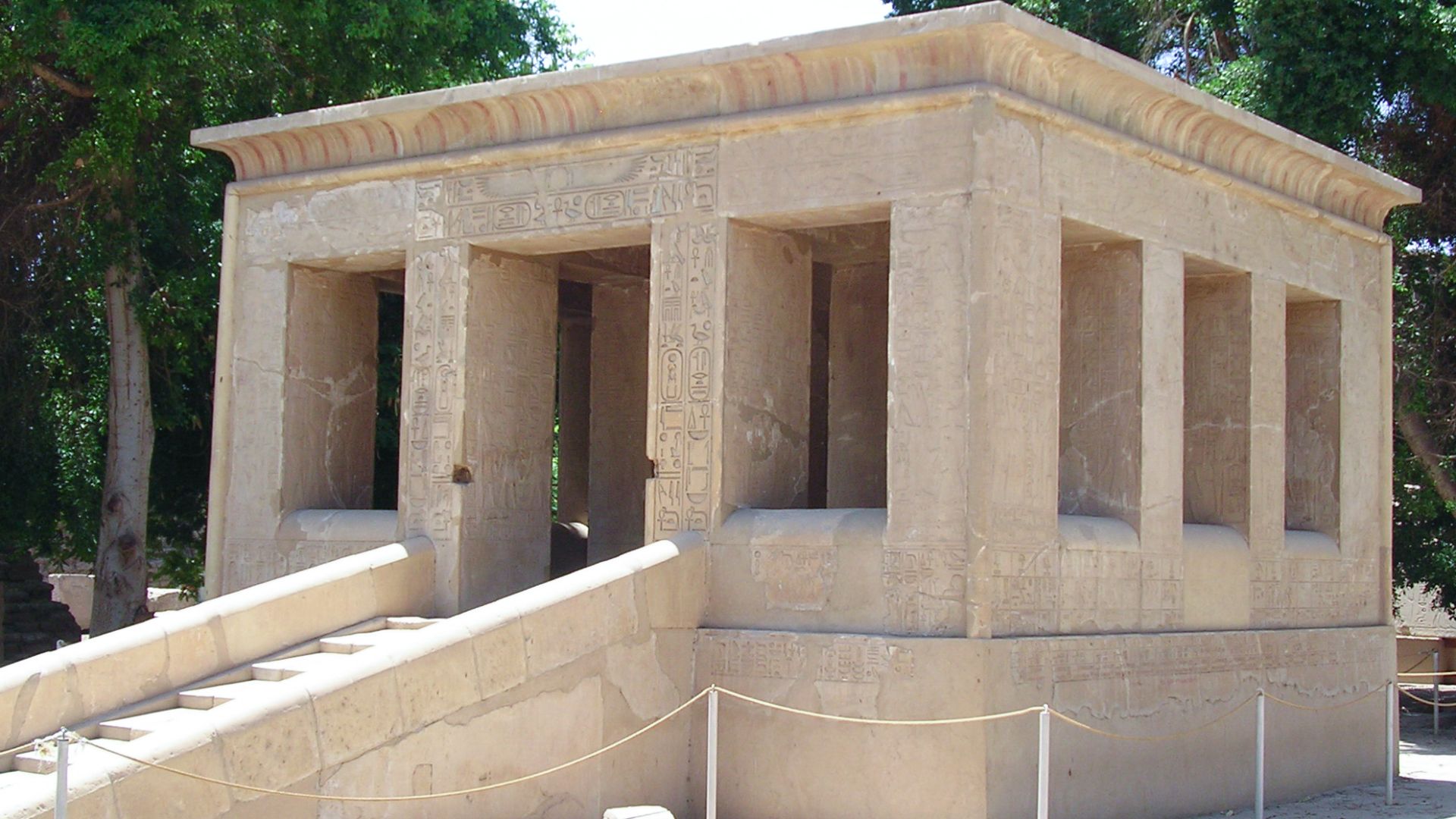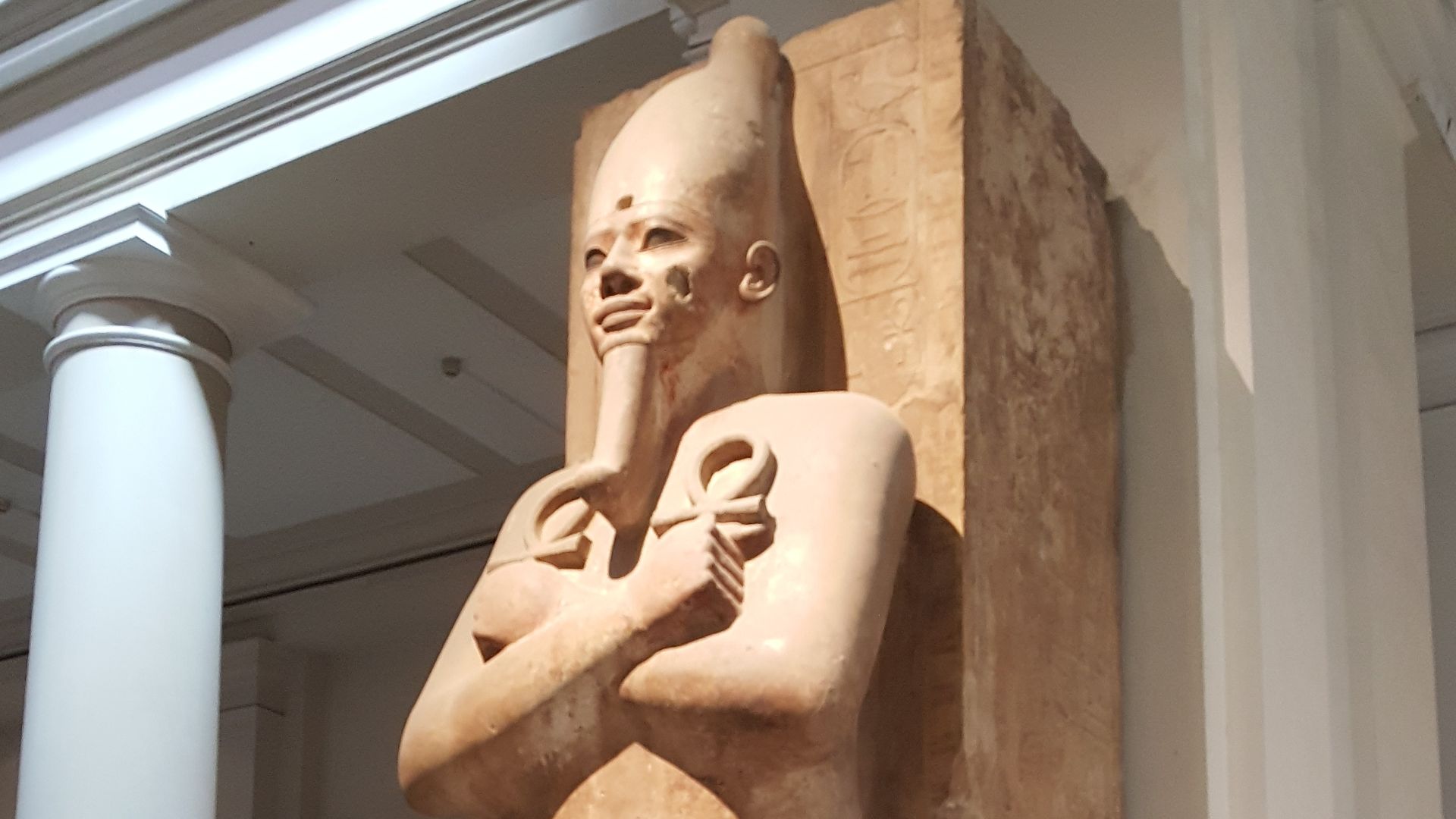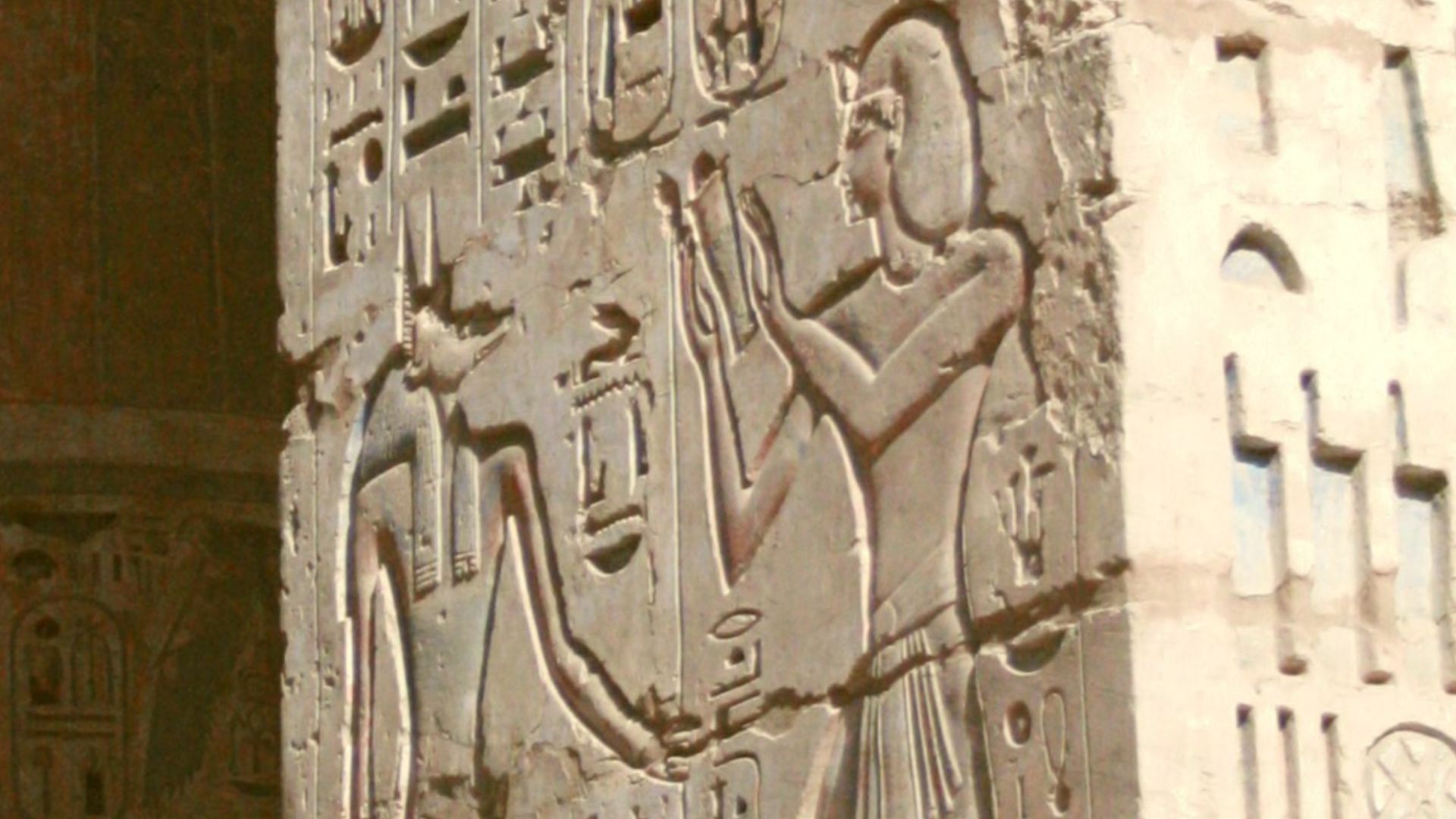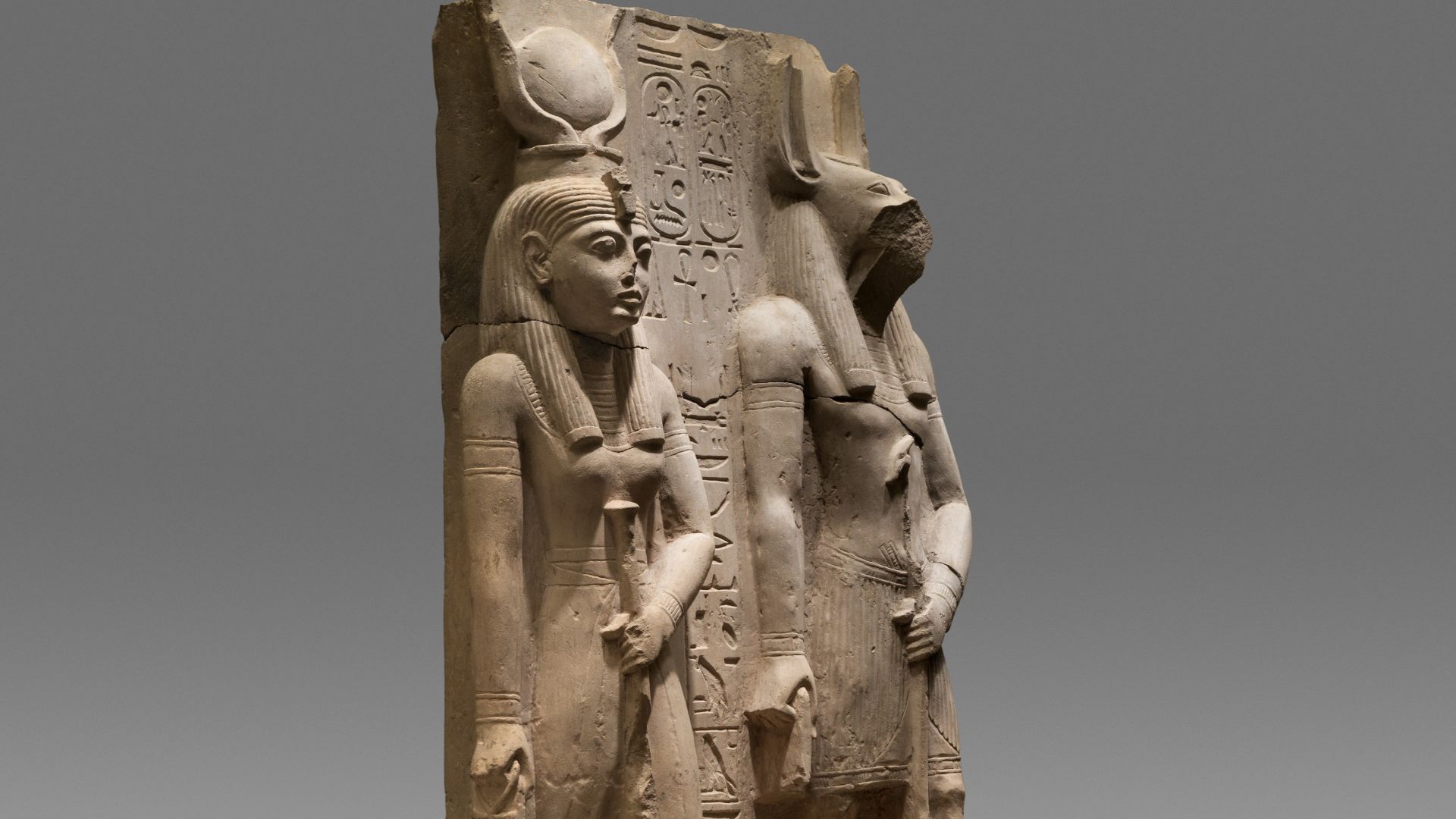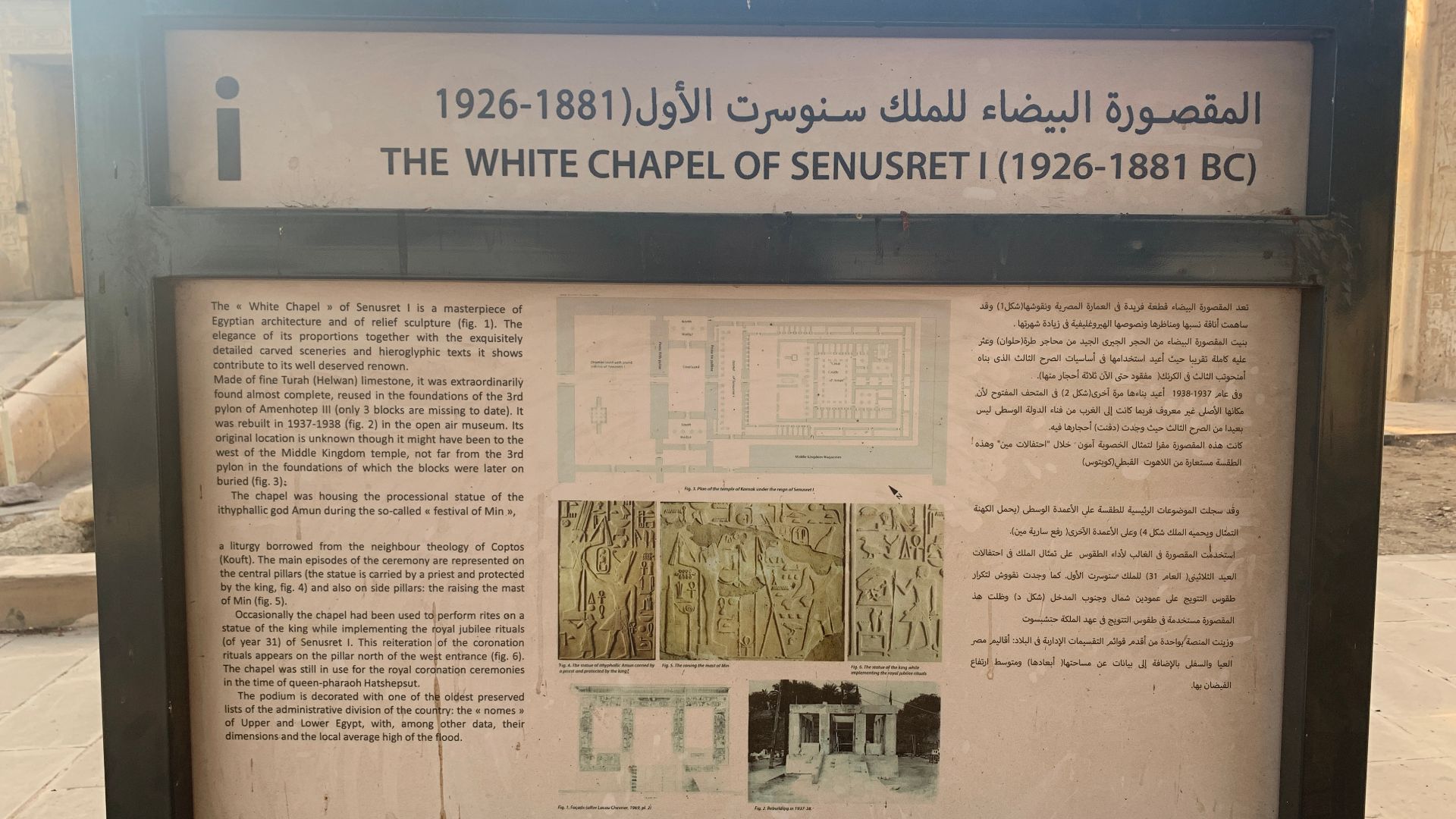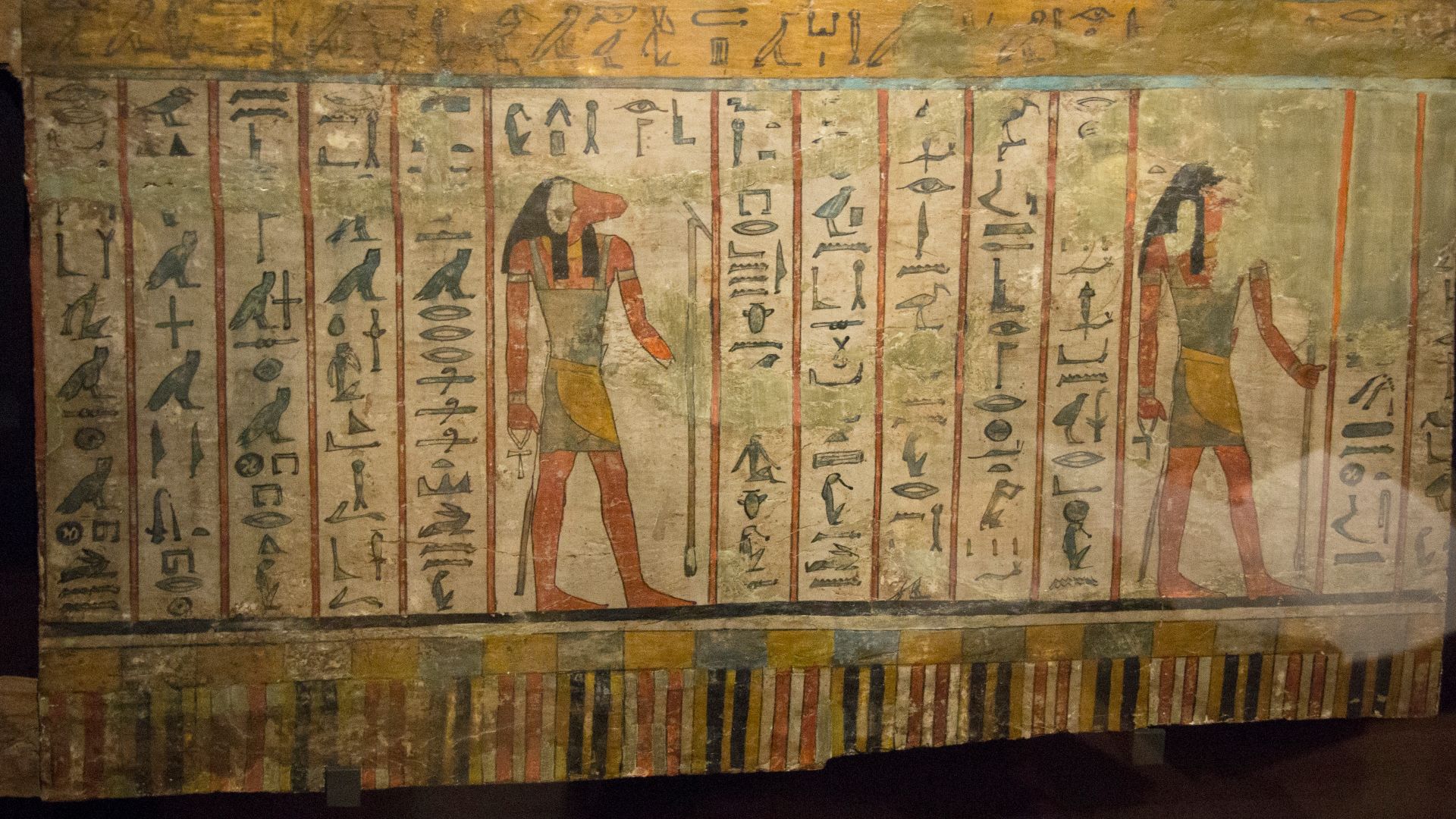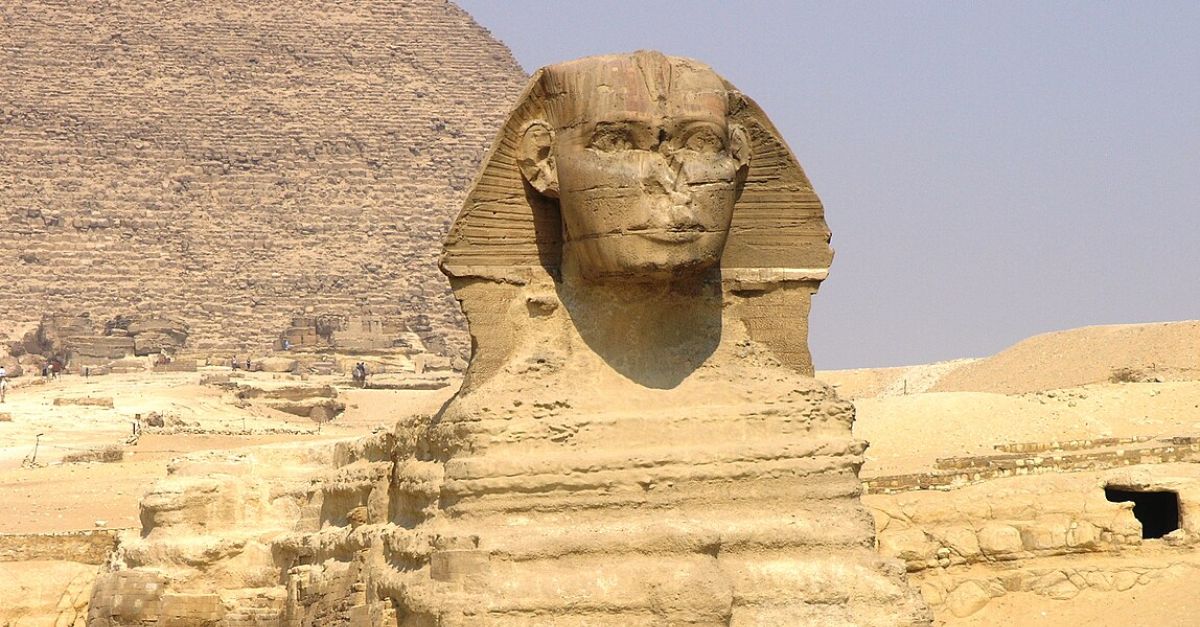Noble Remains
Nobody expected to find her there. The burial chamber had been sealed since pharaohs ruled the Nile, hiding secrets that even ancient grave robbers couldn't reach. But a mysterious shaft changed everything.
Ancient Asyut
Four thousand years ago, Asyut thrived as one of Egypt's most powerful cities along the Nile's western bank. This strategic settlement controlled vital trade routes connecting northern Egypt to Nubia's gold mines. Ancient temples, palaces, and libraries flourished here, making it a cultural powerhouse.
Cultural Center
Asyut served as the capital of the Thirteenth Nome of Upper Egypt, where two prominent gods held sway. Anubis and Wepwawet, both funerary deities, watched over this sacred area. The city's priests and scribes preserved knowledge in vast libraries, while artisans crafted exquisite works.
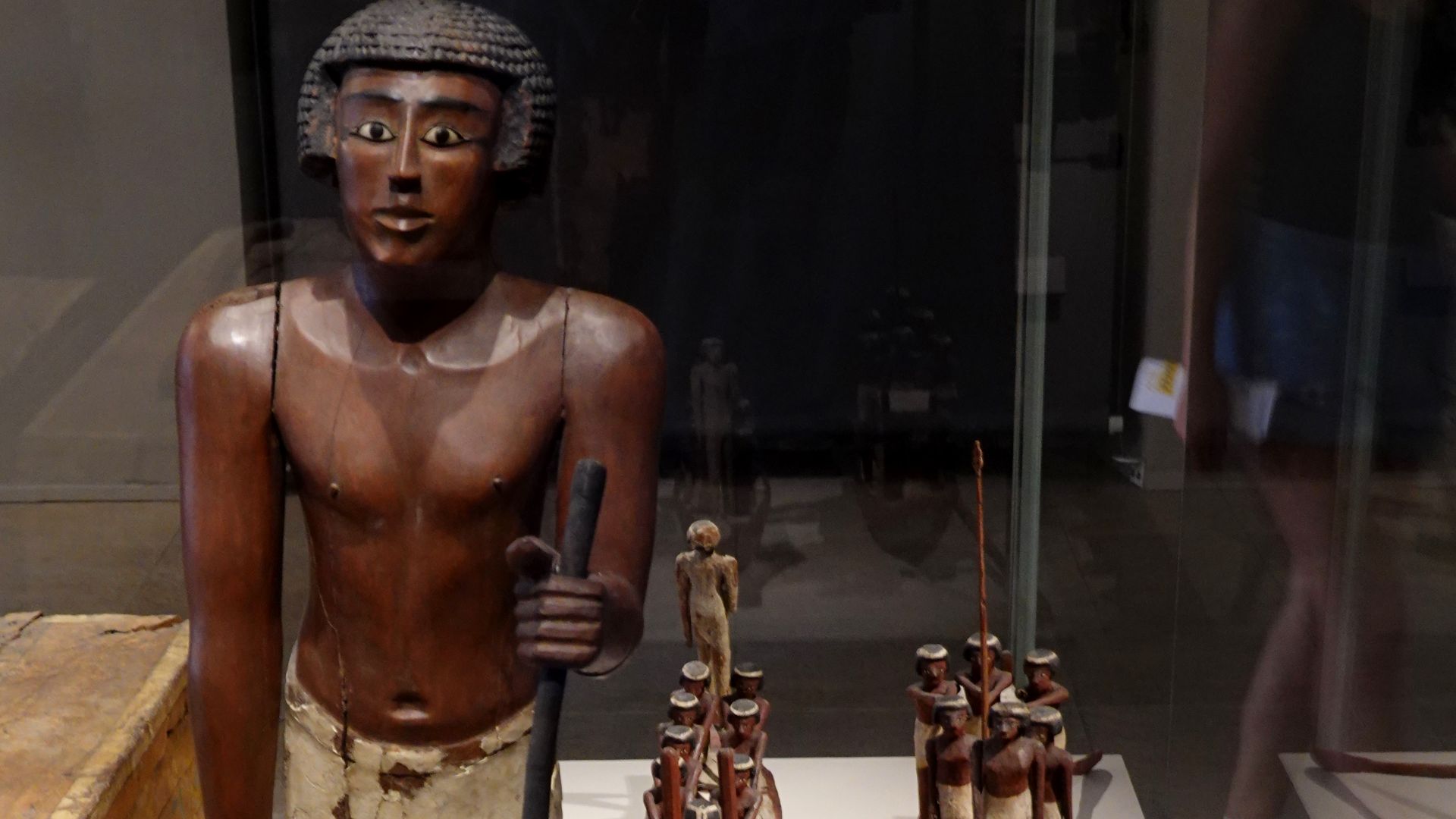 Prof. Mortel, Wikimedia Commons
Prof. Mortel, Wikimedia Commons
Middle Kingdom
Between 2030 and 1640 BC, Egypt entered its Middle Kingdom period, often called the classical age of Egyptian civilization. This era brought political stability after chaotic times, allowing arts and literature to flourish. Pharaohs centralized power while provincial governors like those in Asyut gained unprecedented influence.
12th Dynasty
The 12th Dynasty was founded by Amenemhat I, who likely served as vizier under Mentuhotep IV, rose to prominence around 1991 BCE, and established a new royal line. The leader introduced the practice of coregency, sharing authority with his chosen successor, his son, Senusret I.
Trade Routes
Asyut's location made it the gateway to Africa's riches, positioned perfectly along the famous Forty Days' Road. Massive caravans carrying up to 12,000 camels passed through, bringing gold, ivory, and exotic goods from Nubia and beyond. This commercial hub generated enormous wealth, funding magnificent tombs.
Forty Days’ Road
The Forty Days' Road, known in Arabic as Darb al-Arba'in, is one of the most famous and ancient trans-Saharan caravan routes. Its name comes from the traditional belief that a caravan journey along the route took forty days to complete in antiquity.
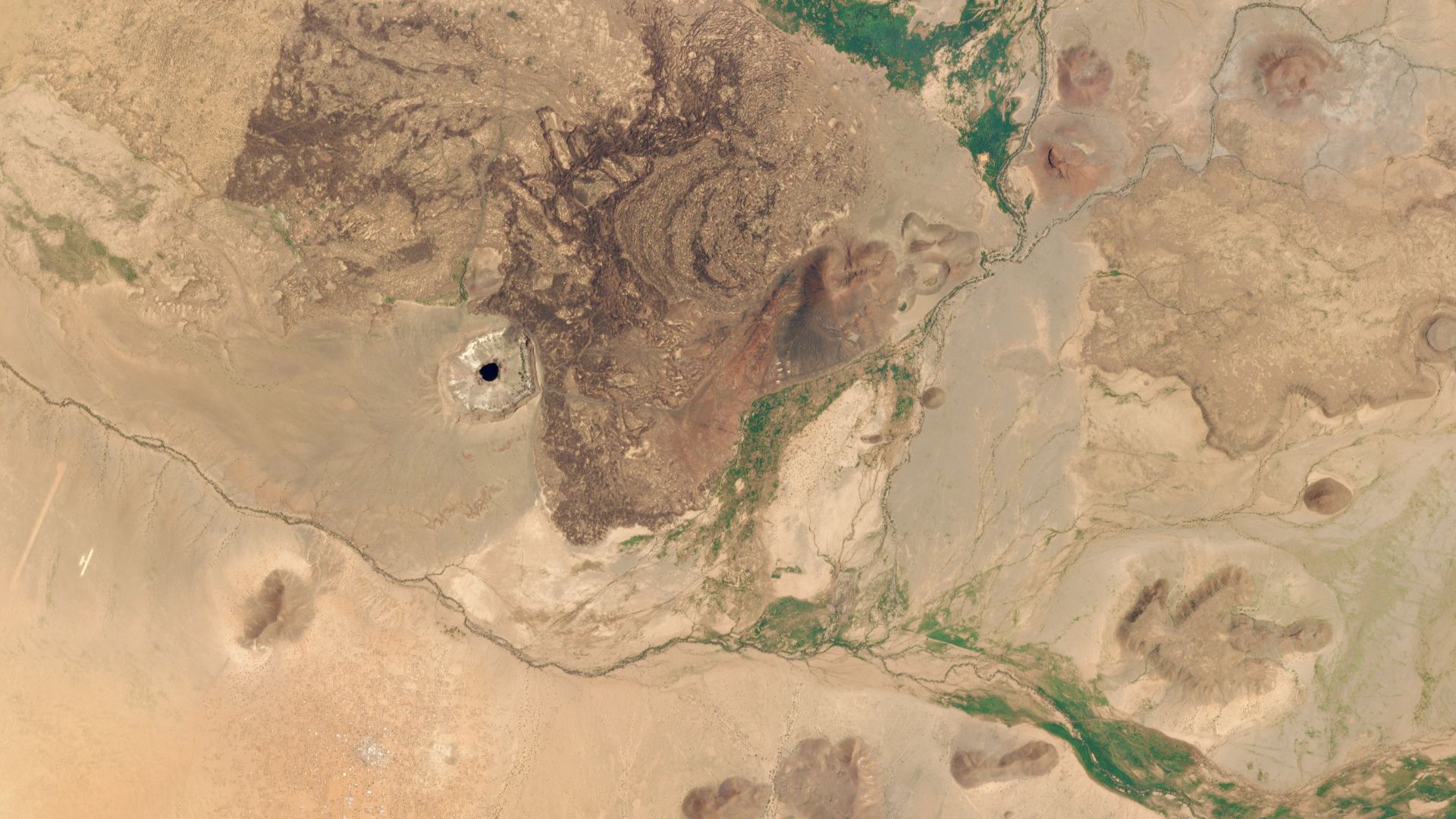 Planet Labs, Inc., Wikimedia Commons
Planet Labs, Inc., Wikimedia Commons
Forty Days’ Road (Cont.)
This route stretches approximately 1,770–1,800 km (about 1,100 miles), running north–south from the Darfur region in what is now Sudan, through a chain of oases (including Kharga and Selima), and ending at Asyut on the Nile in Egypt.
 MontyofEgypt, Wikimedia Commons
MontyofEgypt, Wikimedia Commons
Senusret I
Pharaoh Senusret I ruled Egypt from 1971 to 1926 BC, becoming one of the Middle Kingdom's most powerful kings. He expanded Egypt's borders, launched military campaigns into Nubia, and established diplomatic relations with Syrian rulers. His 45-year reign brought unprecedented prosperity.
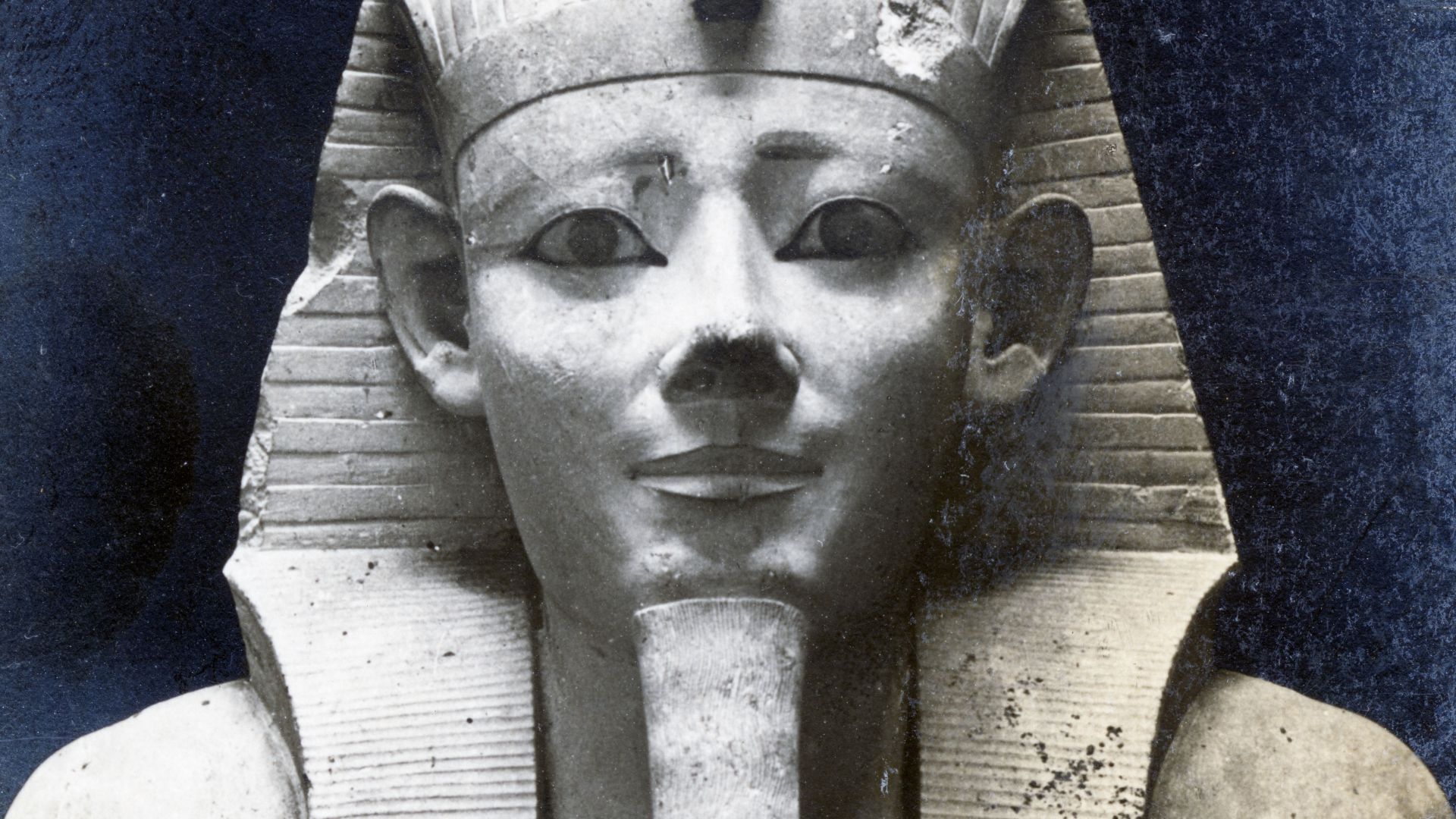 Marco Chemello (WMIT), Wikimedia Commons
Marco Chemello (WMIT), Wikimedia Commons
Royal Expansion
Under his leadership, Egypt pushed its southern border to the Second Cataract, establishing fortresses and victory monuments. The pharaoh organized expeditions to Western Desert oases while maintaining control over lucrative trade networks. His building projects included temples, pyramids, and the famous White Chapel at Karnak.
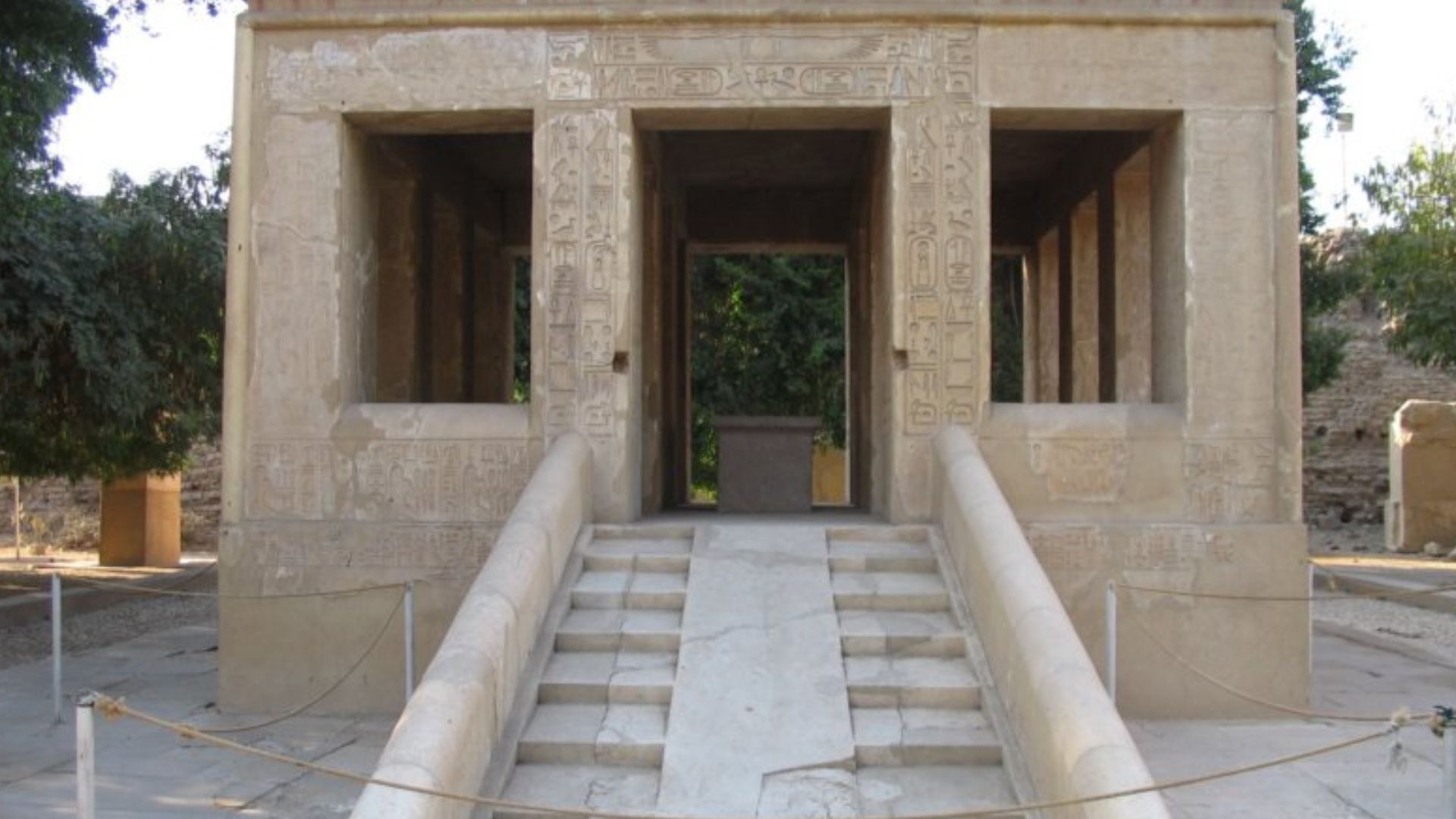 The original uploader was Nefertari be at French Wikipedia., Wikimedia Commons
The original uploader was Nefertari be at French Wikipedia., Wikimedia Commons
Second Cataract
Also known as the Great Cataract, this was one of six major cataracts (shallow, rocky rapids) of the Nile River, located in Nubia, just south of the Egyptian border and north of Wadi Halfa. In antiquity, it marked a key frontier between Egypt and Nubia.
White Chapel (Karnak)
The White Chapel’s primary purpose was likely to serve as a bark shrine for the sacred boat of the god Amun, commemorating the king’s Heb Sed (jubilee) festival, a celebration of royal renewal. The structure is nearly square (6.8 x 6.5 meters).
Djefaihapi's Rise
Djefaihapi, referred to as Hepzefa, Hapidjefa, or Djefaihap, rose to prominence as the nomarch or provincial governor of Asyut during the rule of Pharaoh Senusret I in the 12th Dynasty. Historical evidence suggests he may have replaced an earlier, unrelated family of nomarchs.
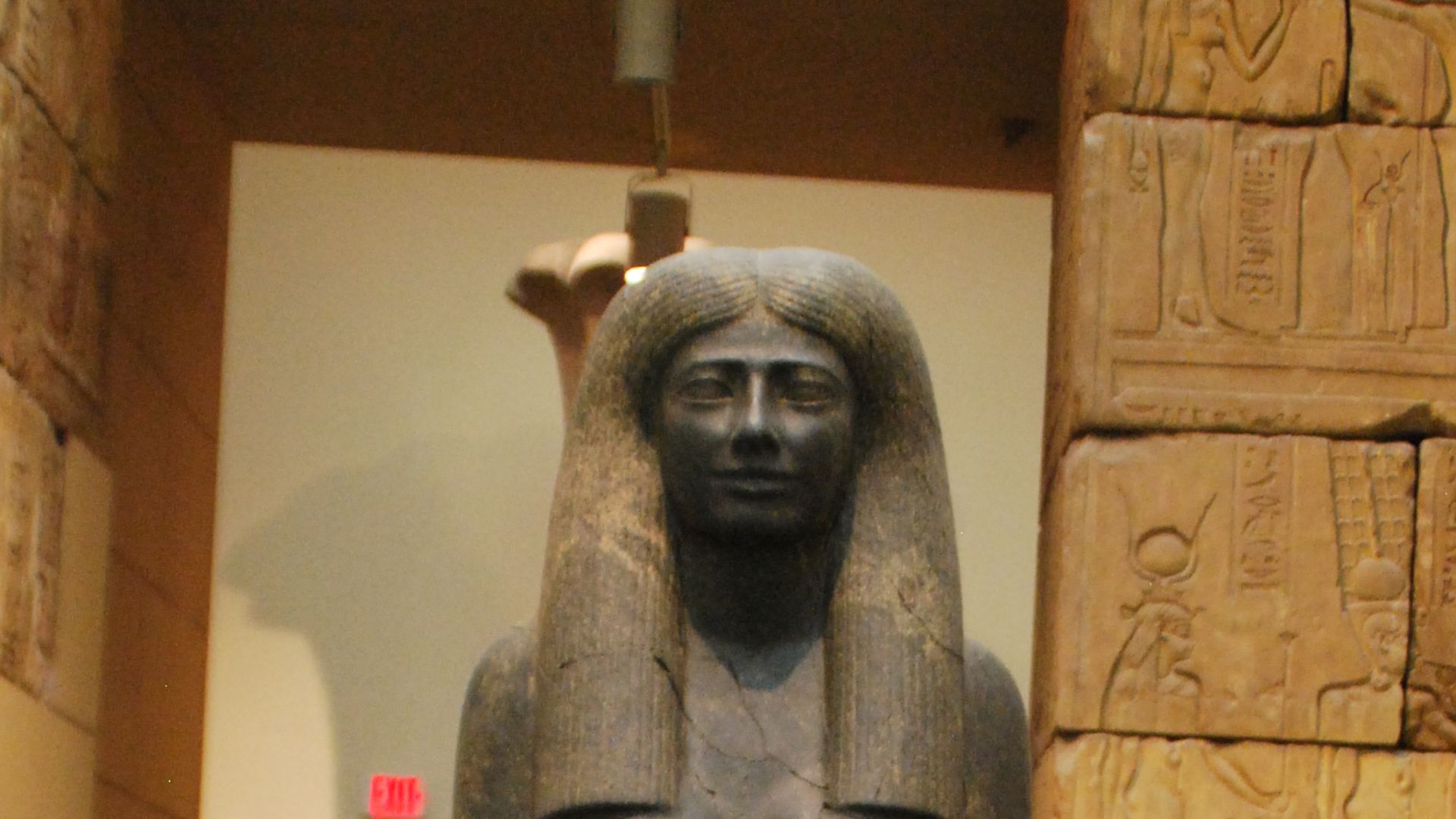 Picture taken by Marcus Cyron, Wikimedia Commons
Picture taken by Marcus Cyron, Wikimedia Commons
Djefaihapi's Rise (Cont.)
This could be possibly as part of the centralizing reforms by Senusret I or his predecessor, Amenemhat I. Born to Idi-aat and married to Lady Sennuwy, Djefaihapi controlled this city. As both governor and High Priest, he oversaw religious and administrative affairs.
Provincial Governor
He supervised trade expeditions, collected taxes, and maintained order across his territory. Djefaihapi’s stature is most visibly reflected in his monumental rock-cut tomb (Tomb 1) at Asyut, the largest preserved non-royal tomb of the Middle Kingdom, gifted by Senusret I himself.
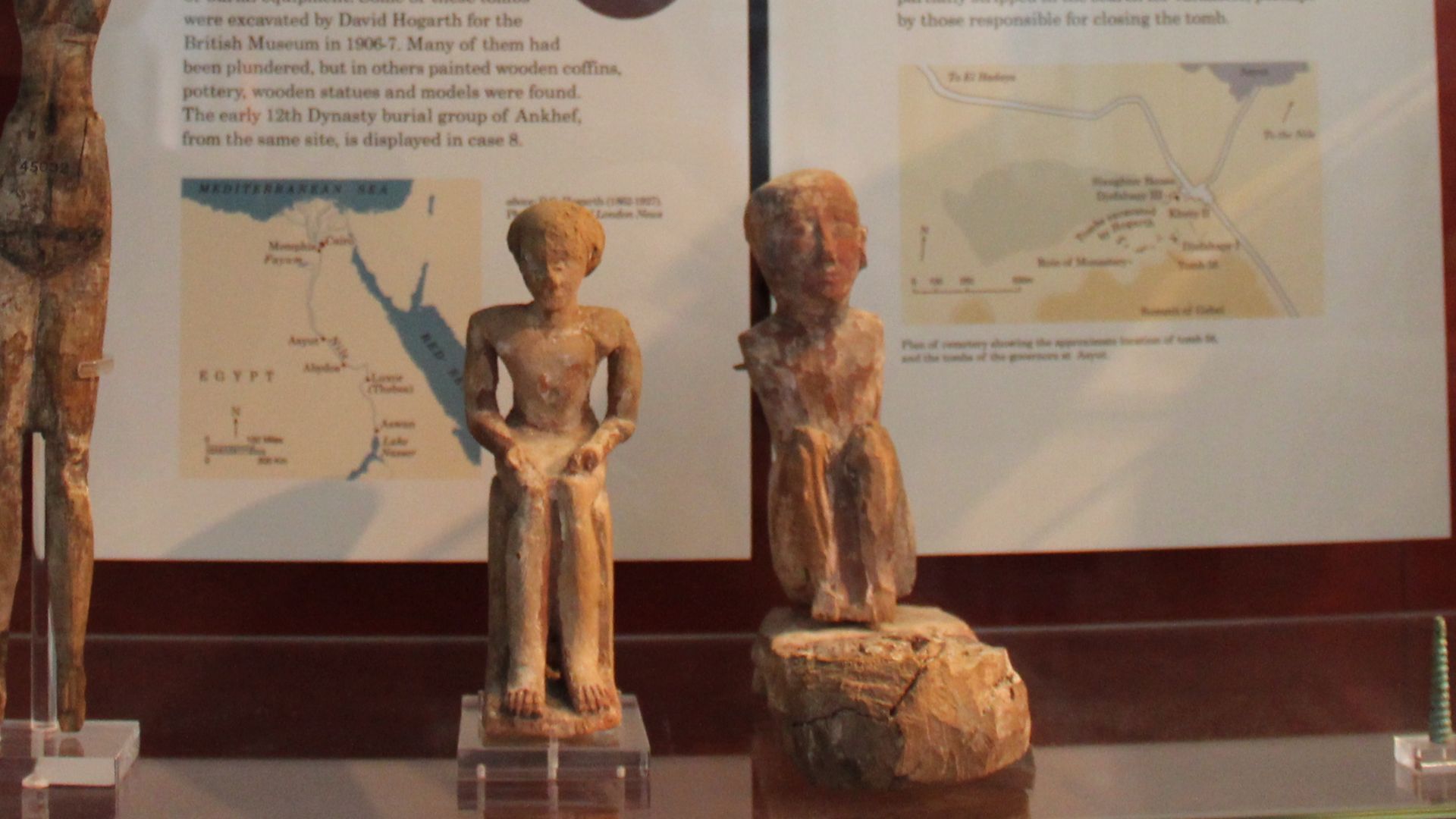 Gary Todd from Xinzheng, China, Wikimedia Commons
Gary Todd from Xinzheng, China, Wikimedia Commons
Tomb Construction
Djefaihapi's tomb was said to be the largest preserved non-royal rock-cut tomb from Egypt’s Middle Kingdom. As per sources, it measured something around 400 feet (about 120 meters) in length and rose over 30 feet (around 9 meters) high.
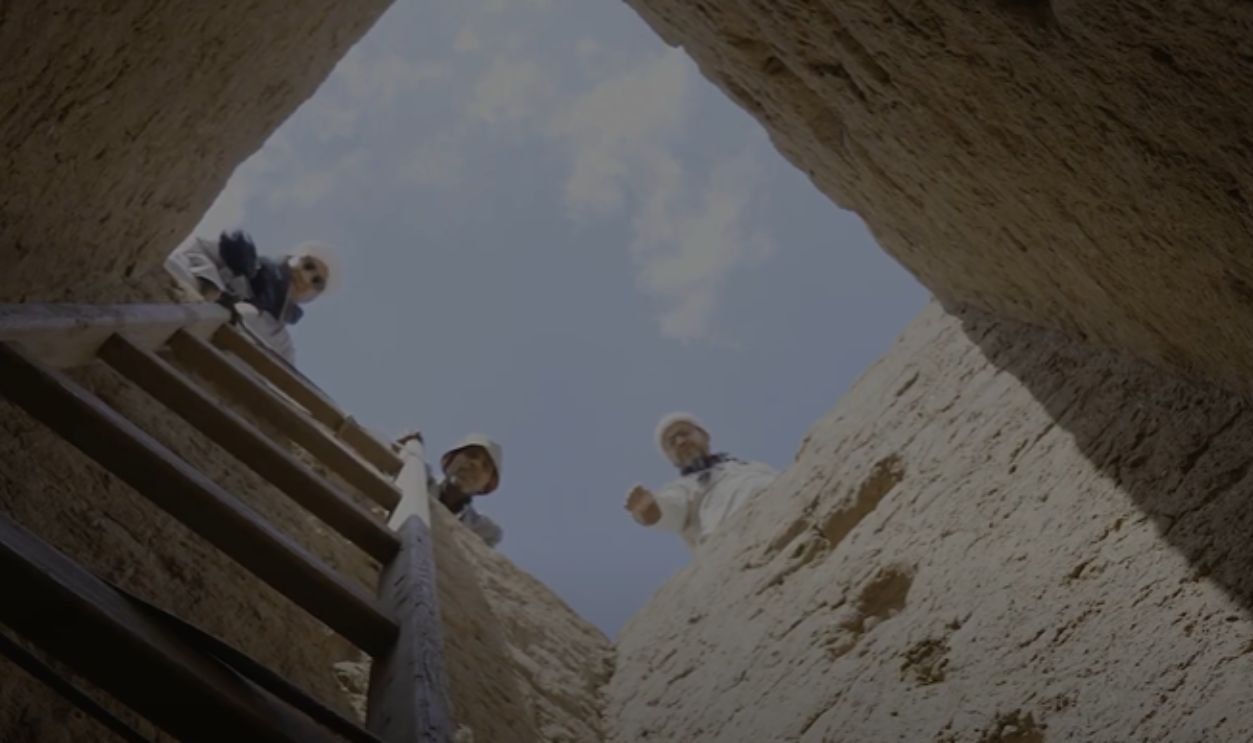 Exclusive: Egyptian Archaeologists Discover 5 Old Kingdom Tombs of 4000+Year-Old by Luxor Times
Exclusive: Egyptian Archaeologists Discover 5 Old Kingdom Tombs of 4000+Year-Old by Luxor Times
Religious Authority
Beyond his role as governor, Djefaihapi was also High Priest of Wepwawet, the wolf-headed god associated with war and the afterlife, and a central deity of Asyut. He was responsible for ordering the rebuilding of the local temple dedicated to Wepwawet, reinforcing his dual authority.
Wepwapet
Wepwawet, whose name means "Opener of the Ways," was an ancient Egyptian deity associated with war, funerary rites, and divine guidance. His cult center was Asyut (Lycopolis), and he was depicted as a jackal or wolf, often leading royal processions or guiding souls through the afterlife.
Personal Legacy
He took care to distinguish between offerings from his own property and those from his official or priestly offices, highlighting a sophisticated approach to personal legacy and religious endowment. Djefaihapi’s tomb inscriptions detail how he established perpetual funerary cults.
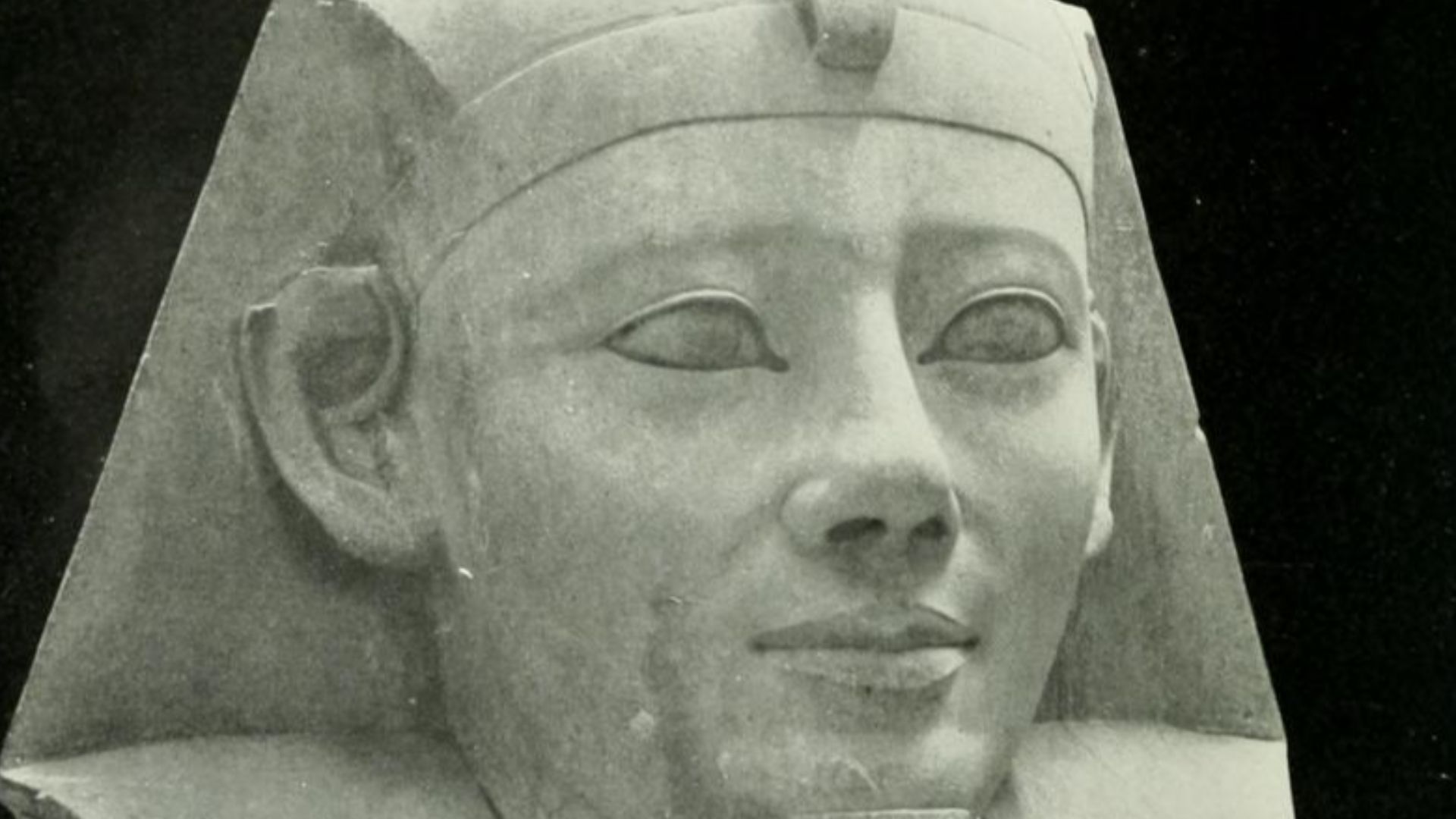 W. M. Flinders Petrie (1853-1942), Wikimedia Commons
W. M. Flinders Petrie (1853-1942), Wikimedia Commons
Edi's Birth
Around 1950 BC, Djefaihapi and his wife welcomed their only daughter, Edi, into one of Egypt's most prestigious families. Born into immense privilege, she grew up surrounded by the wealth and power of Asyut's governing elite. She learned the refined customs of Egyptian nobility.
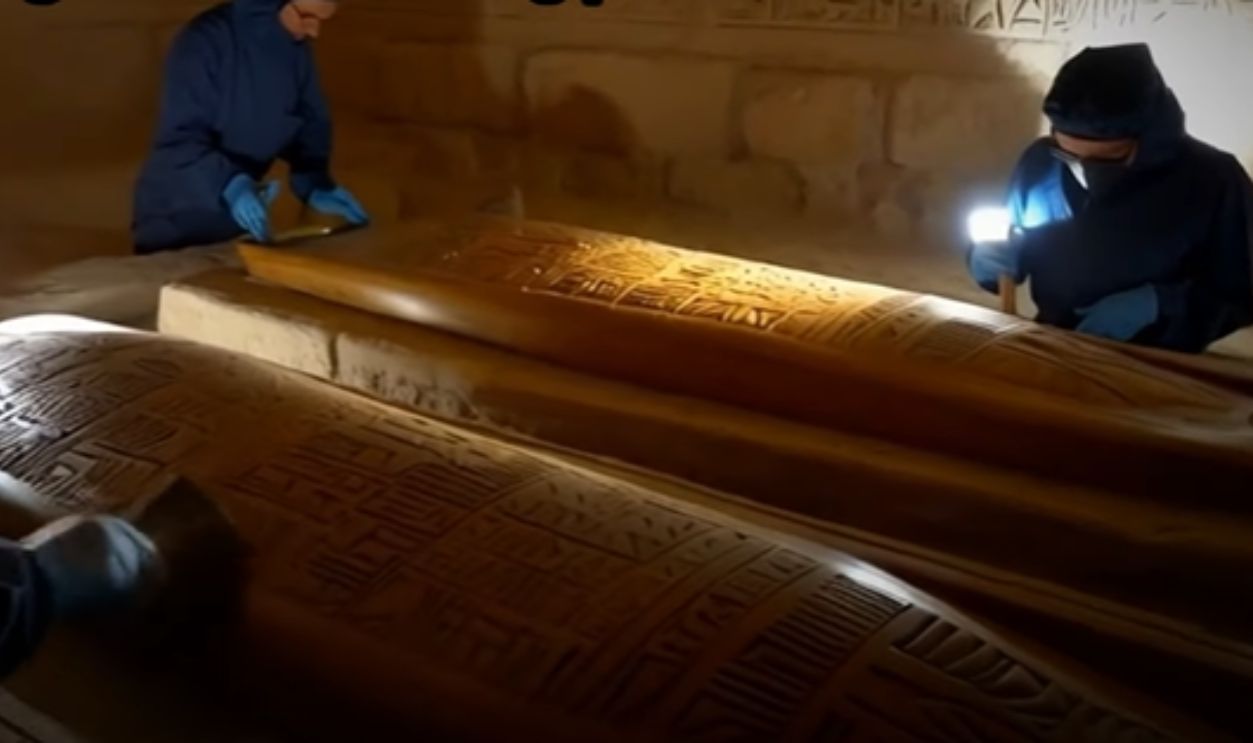 Sarcófagos de 4000 años REVELAN SECRETOS de la hija de un gobernador? by De Interes Para Ti
Sarcófagos de 4000 años REVELAN SECRETOS de la hija de un gobernador? by De Interes Para Ti
Noble Heritage
The hieroglyphic inscriptions as found on Edi’s coffins explicitly confer upon her the title “lady of the house,” a designation that highlights her elevated status within Asyut’s provincial aristocracy. This title was commonly reserved for women of high social standing in ancient Egypt.
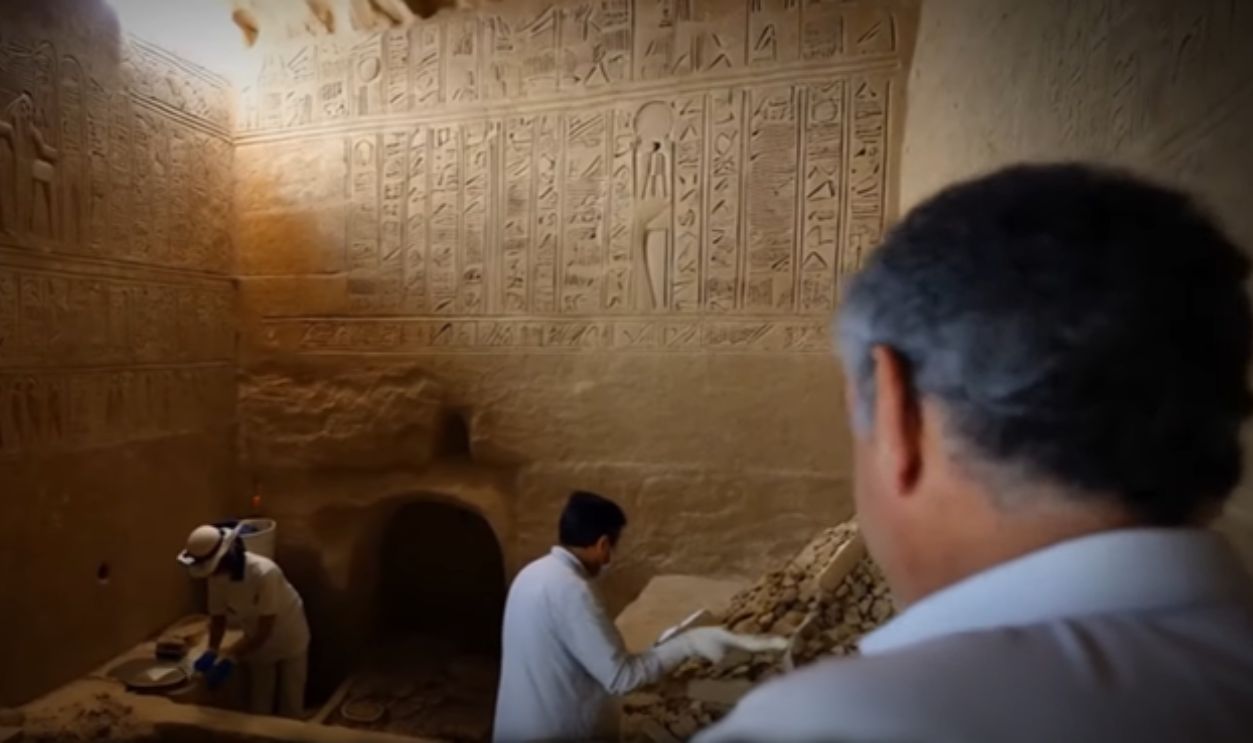 Sarcófagos de 4000 años REVELAN SECRETOS de la hija de un gobernador? by De Interes Para Ti
Sarcófagos de 4000 años REVELAN SECRETOS de la hija de un gobernador? by De Interes Para Ti
Joint Expedition
In 2004, an ambitious international archaeological mission began exploring Asyut's ancient necropolis after decades of restricted military access. The Free University of Berlin partnered with Egypt's Sohag University to investigate the massive limestone cliffs where ancient governors built their eternal homes.
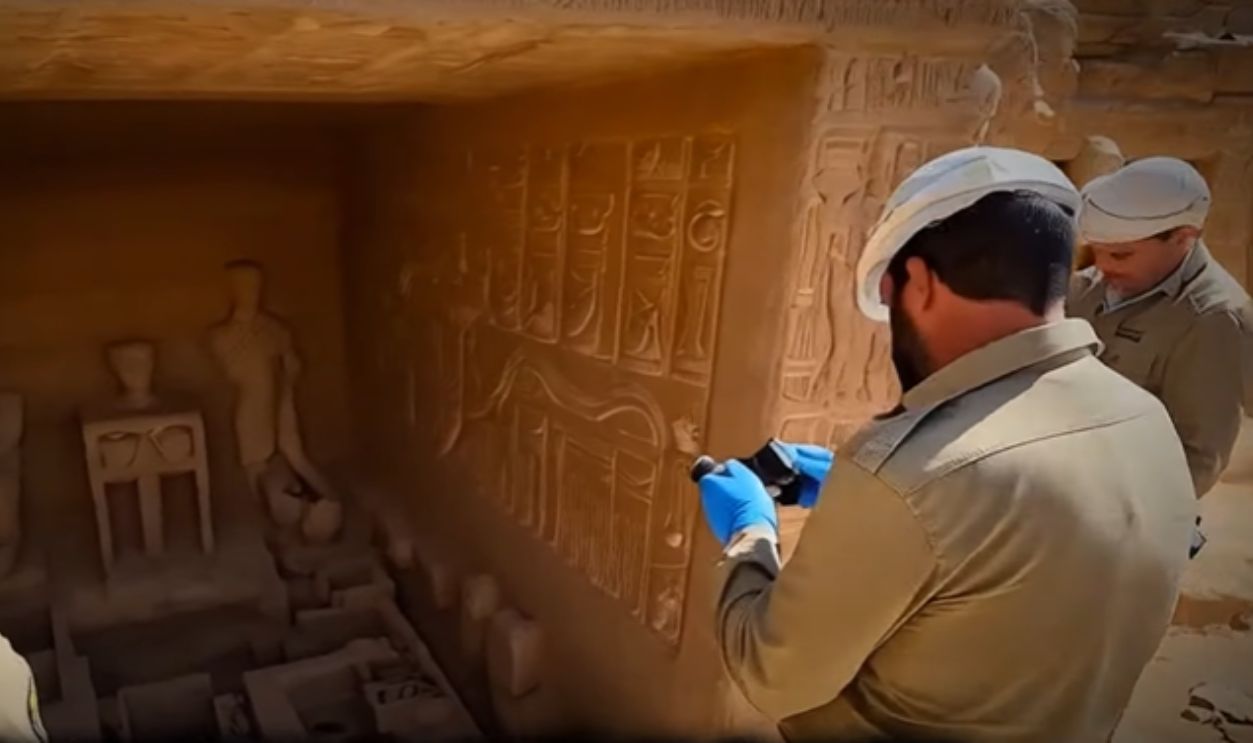 Sarcófagos de 4000 años REVELAN SECRETOS de la hija de un gobernador? by De Interes Para Ti
Sarcófagos de 4000 años REVELAN SECRETOS de la hija de un gobernador? by De Interes Para Ti
University Partnership
Professor Jochem Kahl from Berlin's Free University joined forces with Egyptian scholars, creating a model of international cooperation in archaeology. Kanazawa University from Japan and the Polish Academy of Sciences also contributed expertise to this groundbreaking project.
Excavation Begins
The team launched their systematic investigation of Djefaihapi's grand tomb complex, beginning the painstaking work of clearing millennia of debris. Archaeologists carefully documented every artifact, inscription, and architectural detail while battling extreme desert conditions. Their careful approach ensured no valuable information would be lost.
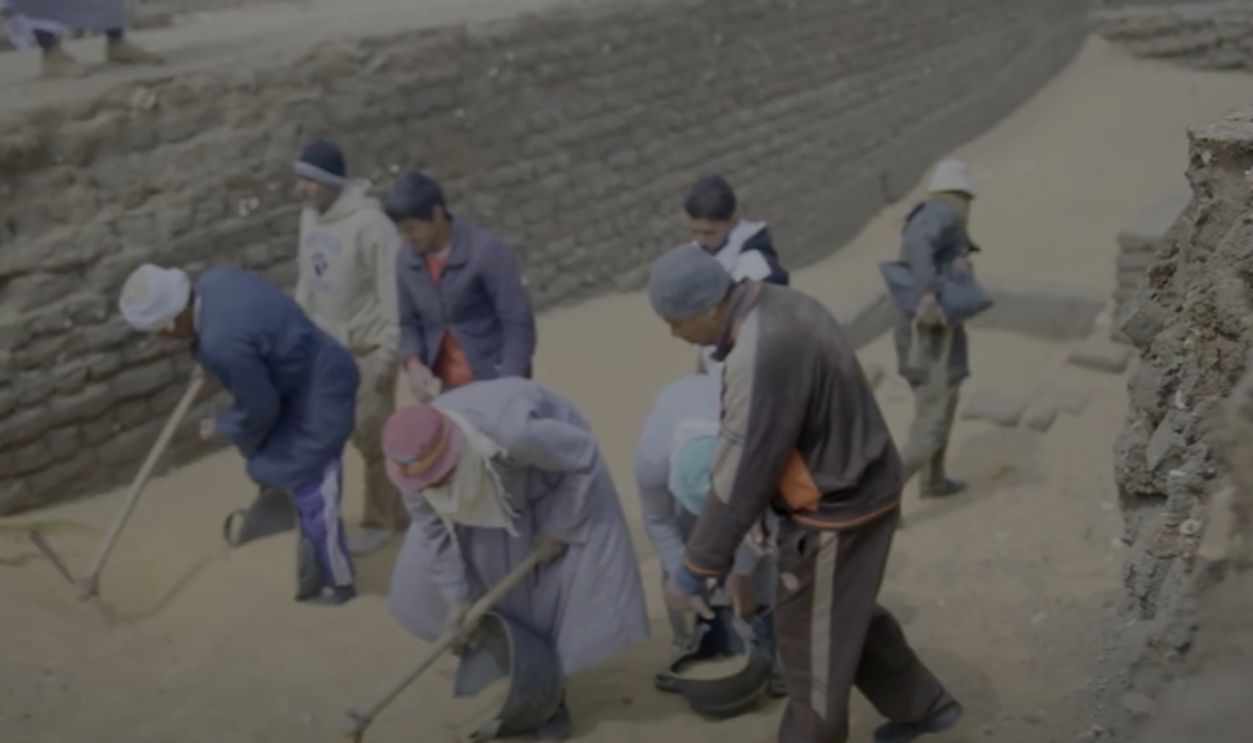 Exclusive: Egyptian Archaeologists Discover 5 Old Kingdom Tombs of 4000+Year-Old by Luxor Times
Exclusive: Egyptian Archaeologists Discover 5 Old Kingdom Tombs of 4000+Year-Old by Luxor Times
Shaft Discovery
Then, in 2022, the excavators found a mysterious vertical shaft plunging 45 feet into solid rock within Djefaihapi's tomb. This hidden passage had been sealed with rubble stones, concealing its secrets for approximately four millennia. This marked a turning point in the expedition.
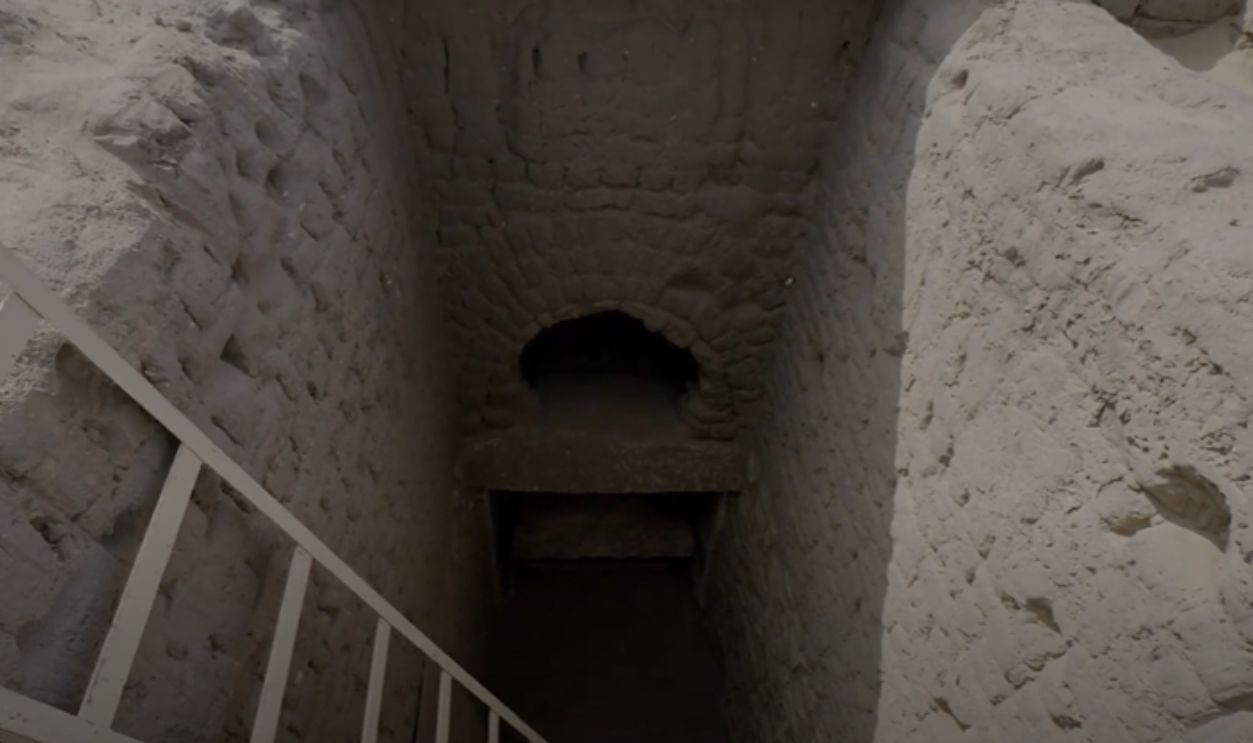 Exclusive: Egyptian Archaeologists Discover 5 Old Kingdom Tombs of 4000+Year-Old by Luxor Times
Exclusive: Egyptian Archaeologists Discover 5 Old Kingdom Tombs of 4000+Year-Old by Luxor Times
Three Campaigns
The dangerous shaft finding required three separate archaeological seasons to complete safely. These took place from 2022 to 2024. Each campaign brought specialized equipment and expert teams who worked systematically, layer by layer, to remove the items that had sealed the shaft.
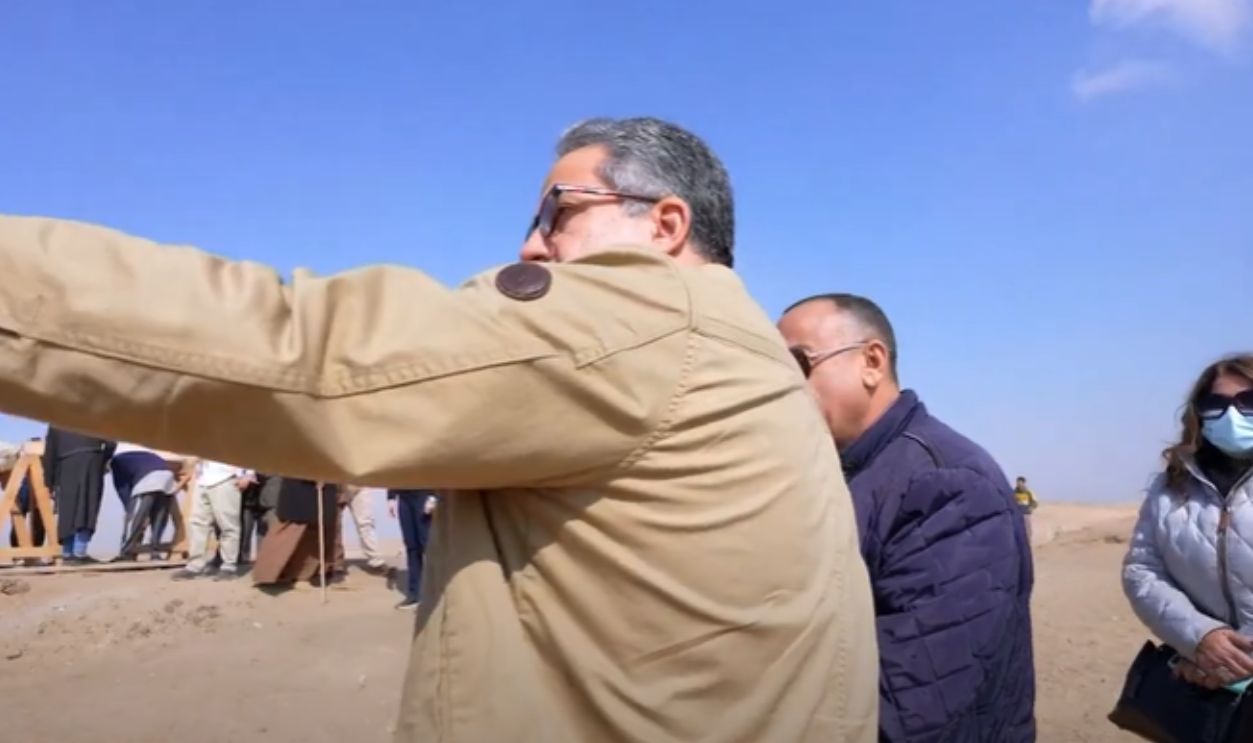 4,600 year-old tombs containing leading figures in society discovered in Egypt by euronews
4,600 year-old tombs containing leading figures in society discovered in Egypt by euronews
Burial Revealed
On September 17, 2024, those undertaking the project finally reached the shaft's bottom. They found a sealed burial chamber that had remained untouched by modern explorers. Inside lay magnificent wooden coffins that were surrounded by other precious grave goods.
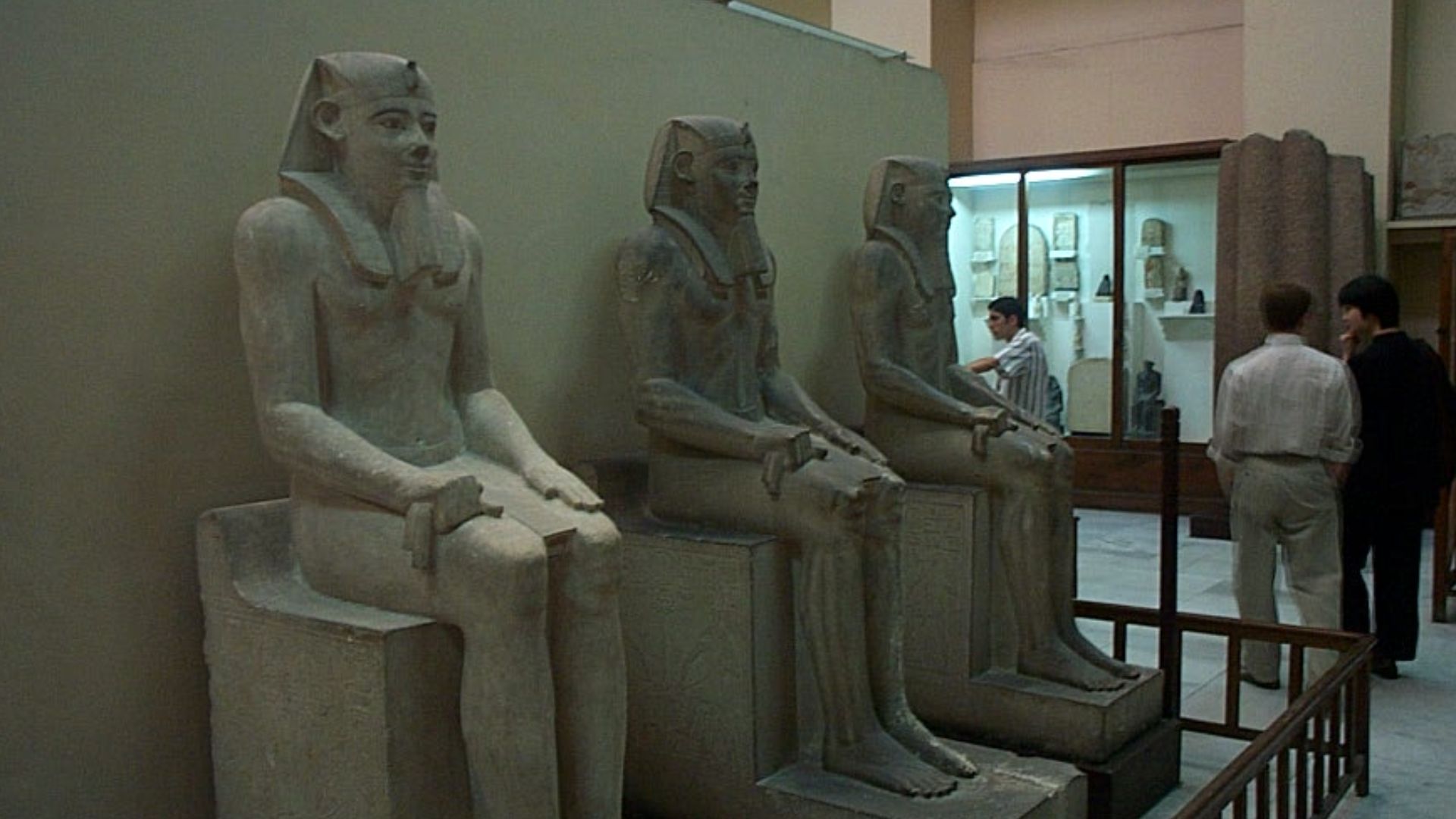 Kingtut at Hungarian Wikipedia, Wikimedia Commons
Kingtut at Hungarian Wikipedia, Wikimedia Commons
Official Announcement
Egypt's Tourism and Antiquities Ministry announced the spectacular discovery on October 2, 2024, through social media and press releases. Officials praised the international team's dedication while emphasizing the find's importance for understanding Middle Kingdom society. The message generated worldwide excitement among historians.
Double Coffins
As per reports, Edi's intriguing burial arrangement featured two wooden coffins, one carefully placed inside the other like Russian nesting dolls. The outer coffin measured 8.6 feet in length while the inner coffin was 7.5 feet long, both crafted from imported wood.
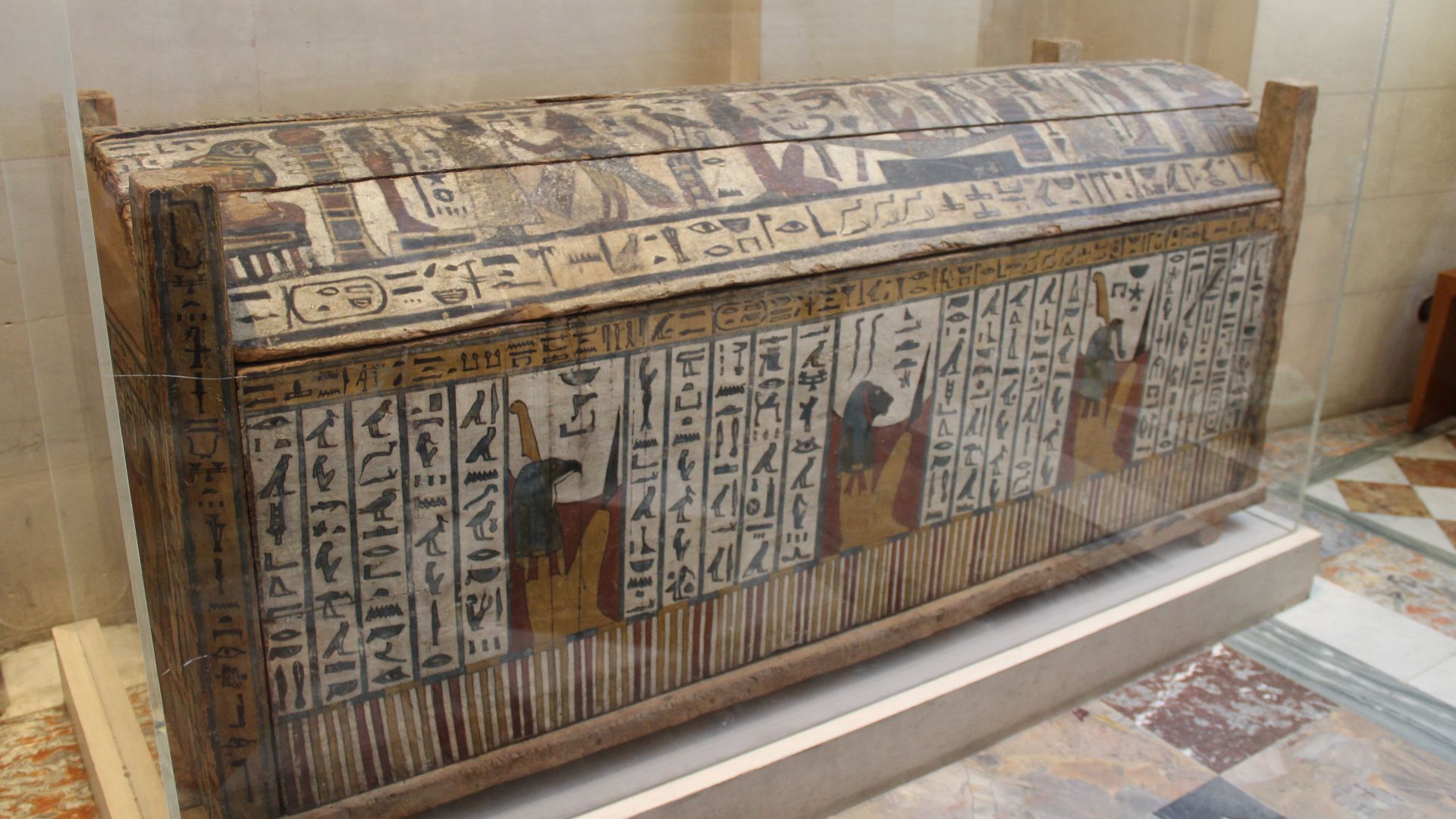 Gary Todd from Xinzheng, China, Wikimedia Commons
Gary Todd from Xinzheng, China, Wikimedia Commons
Nestled Coffin Design
The nested coffin design, where one coffin is placed inside another, personified the ancient Egyptian belief in providing multiple layers of protection for the deceased during their journey to the afterlife. This practice was especially prevalent among the elite.
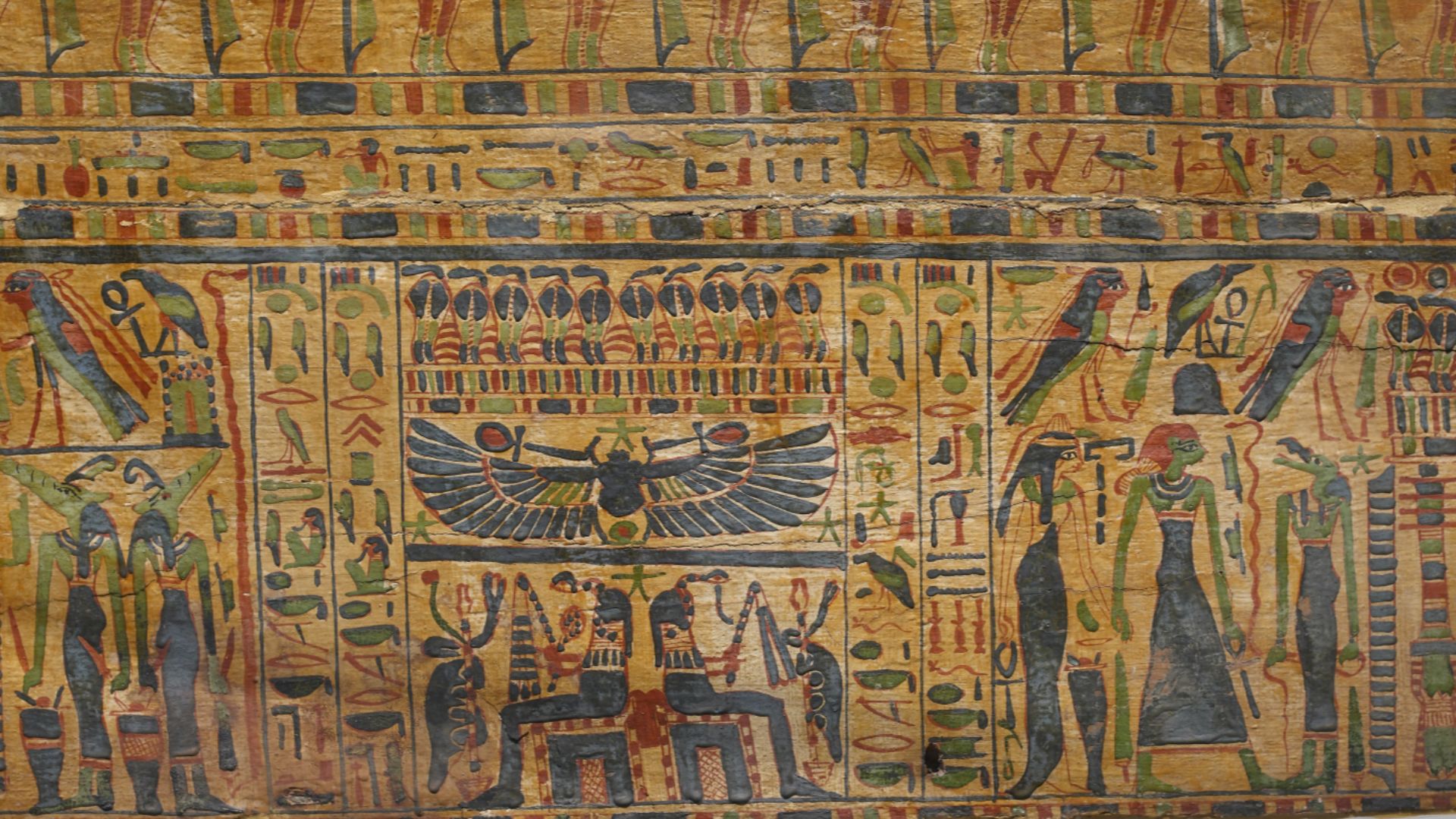 Anonymous (Egypt)Unknown author, Wikimedia Commons
Anonymous (Egypt)Unknown author, Wikimedia Commons
Outer Decorations
The larger of Edi’s two coffins is known for its extraordinarily intricate paintings and hieroglyphic texts, which cover every surface with remarkable detail. Expert craftsmen adorned the coffin with religious scenes depicting the deceased’s journey through the afterlife, using vibrant colors that have survived underground.
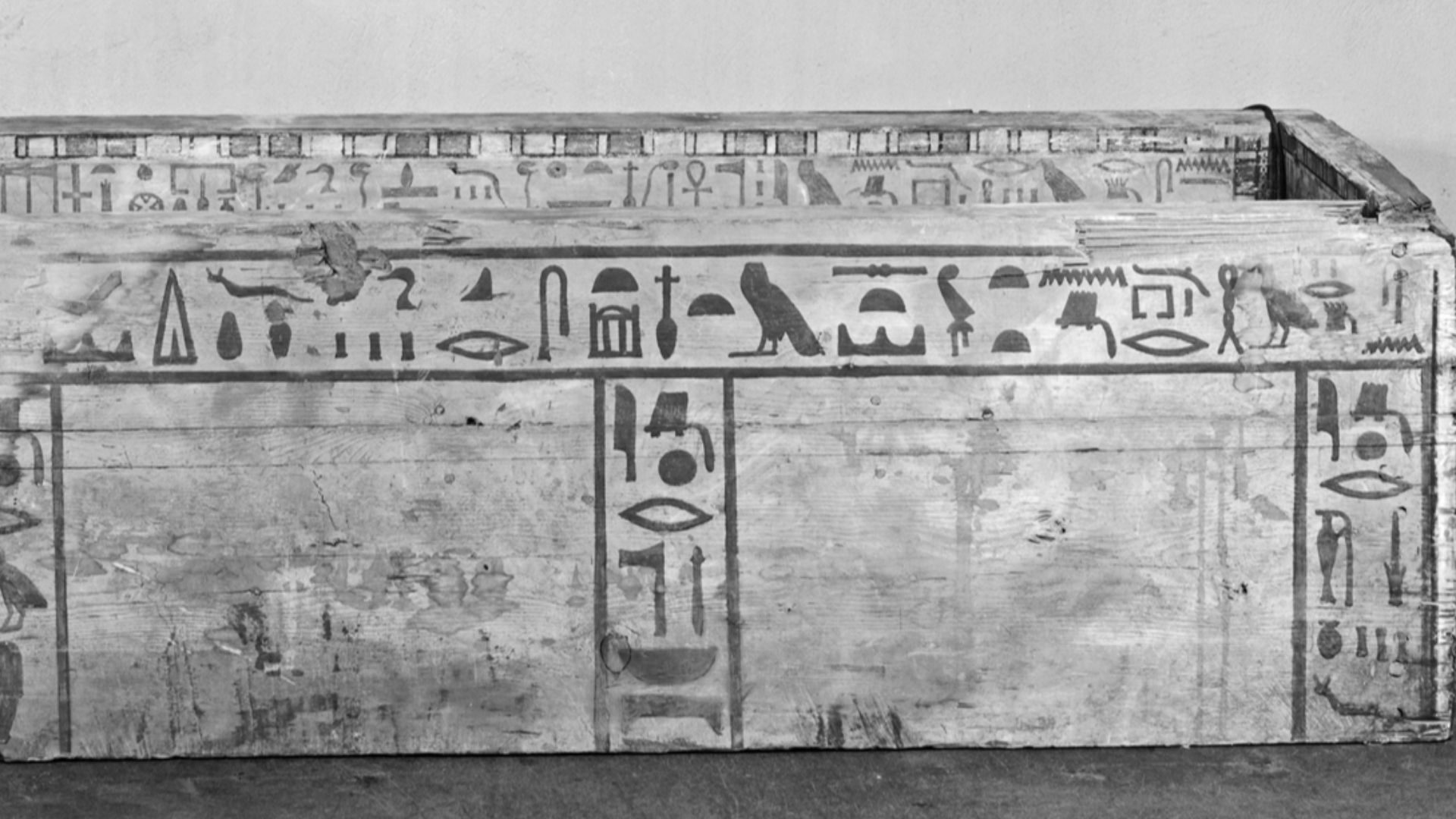 Anonymous (Egypt)Unknown author, Wikimedia Commons
Anonymous (Egypt)Unknown author, Wikimedia Commons
Inner Inscriptions
The smaller one is distinguished by its elaborate decorations and, most importantly, by the dense writings known as Coffin Texts. These texts are a hallmark of Middle Kingdom elite burials, providing magical spells and religious instructions intended to guide and protect the lifeless individual.
Wooden Figurines
Among Edi’s burial goods, the carved wooden figurines found by archaeologists are consistent with a well-established Middle Kingdom funerary tradition. These figurines, often called wooden tomb models, held deep religious significance and were crafted with careful attention to detail to represent various aspects of Egyptian beliefs.
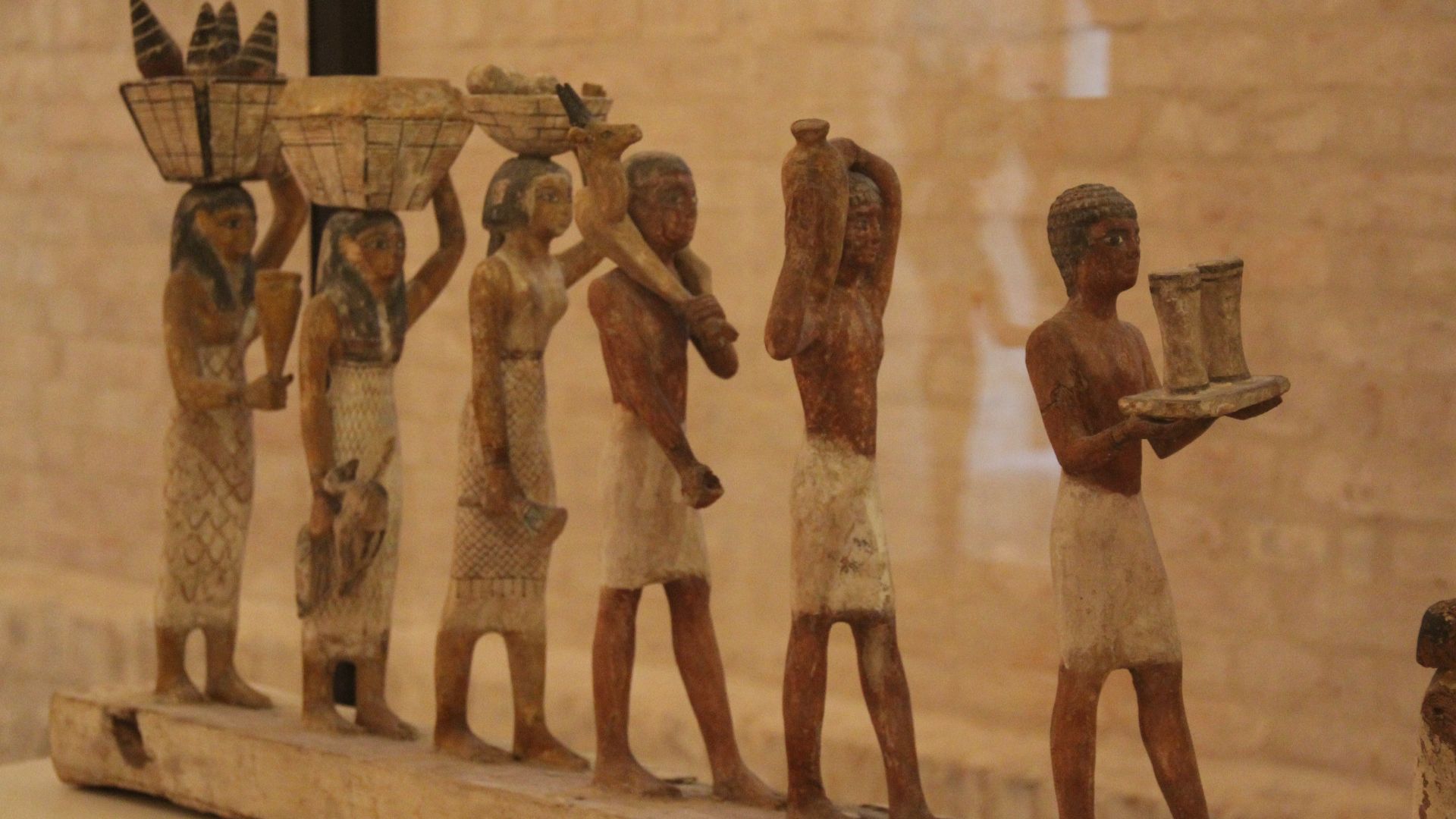 Gary Todd from Xinzheng, China, Wikimedia Commons
Gary Todd from Xinzheng, China, Wikimedia Commons
Wooden Figurines (Cont.)
Wooden figurines were crafted especially to serve these folks in the next world, confirming that all necessary tasks, such as food production, transportation, and offerings, would be carried out for eternity. Common types included models of servants, offering bearers, boats, granaries, and scenes of daily life.
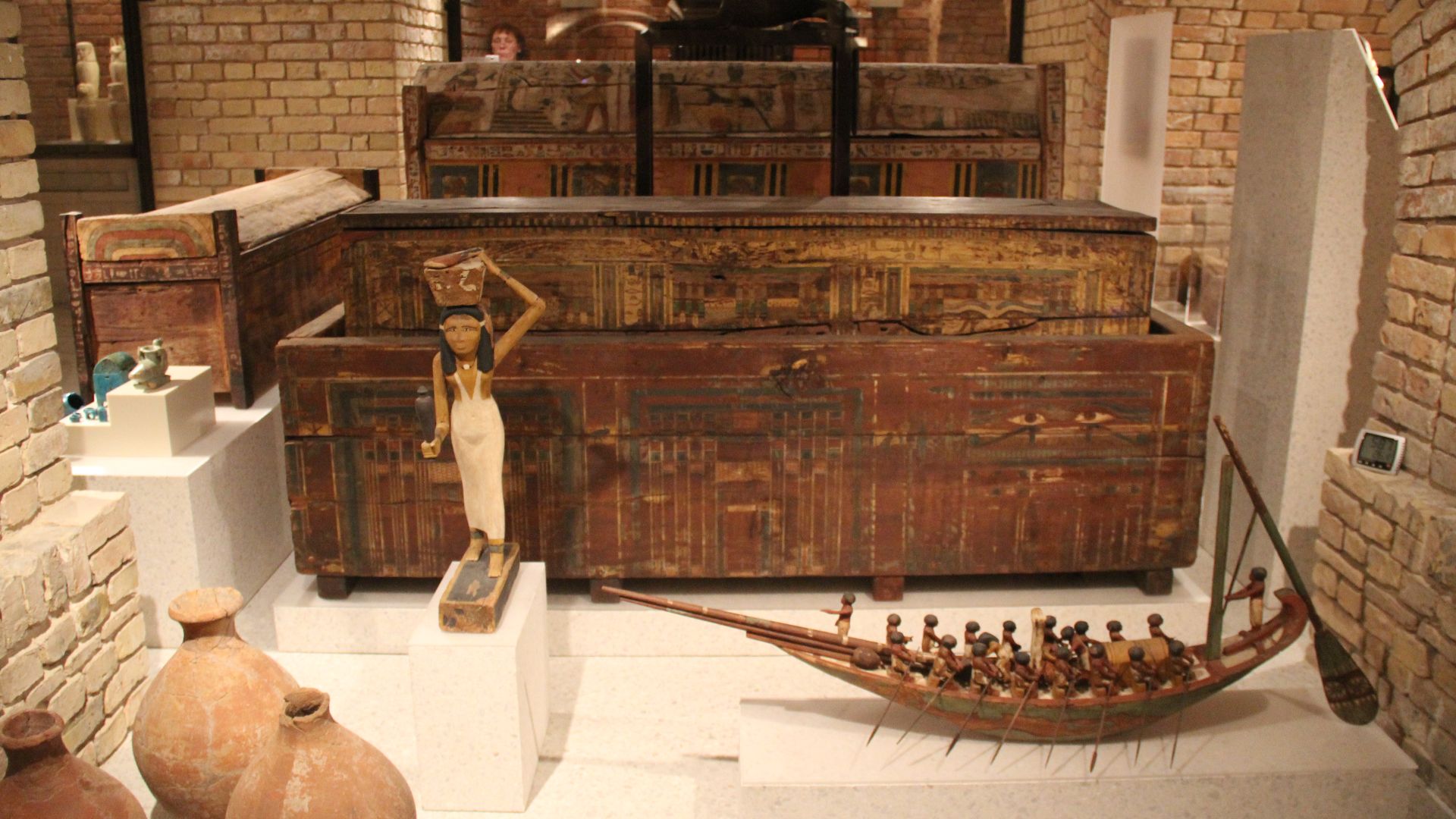 Gary Todd from Xinzheng, China, Wikimedia Commons
Gary Todd from Xinzheng, China, Wikimedia Commons
Standing Woman
One particularly intriguing wooden piece depicts a standing woman who may represent Edi herself. This statuette is that of a slender lady wearing a tight-fitting dress with a long plaited wig cascading over her bosom, and it retains traces of original pigment.
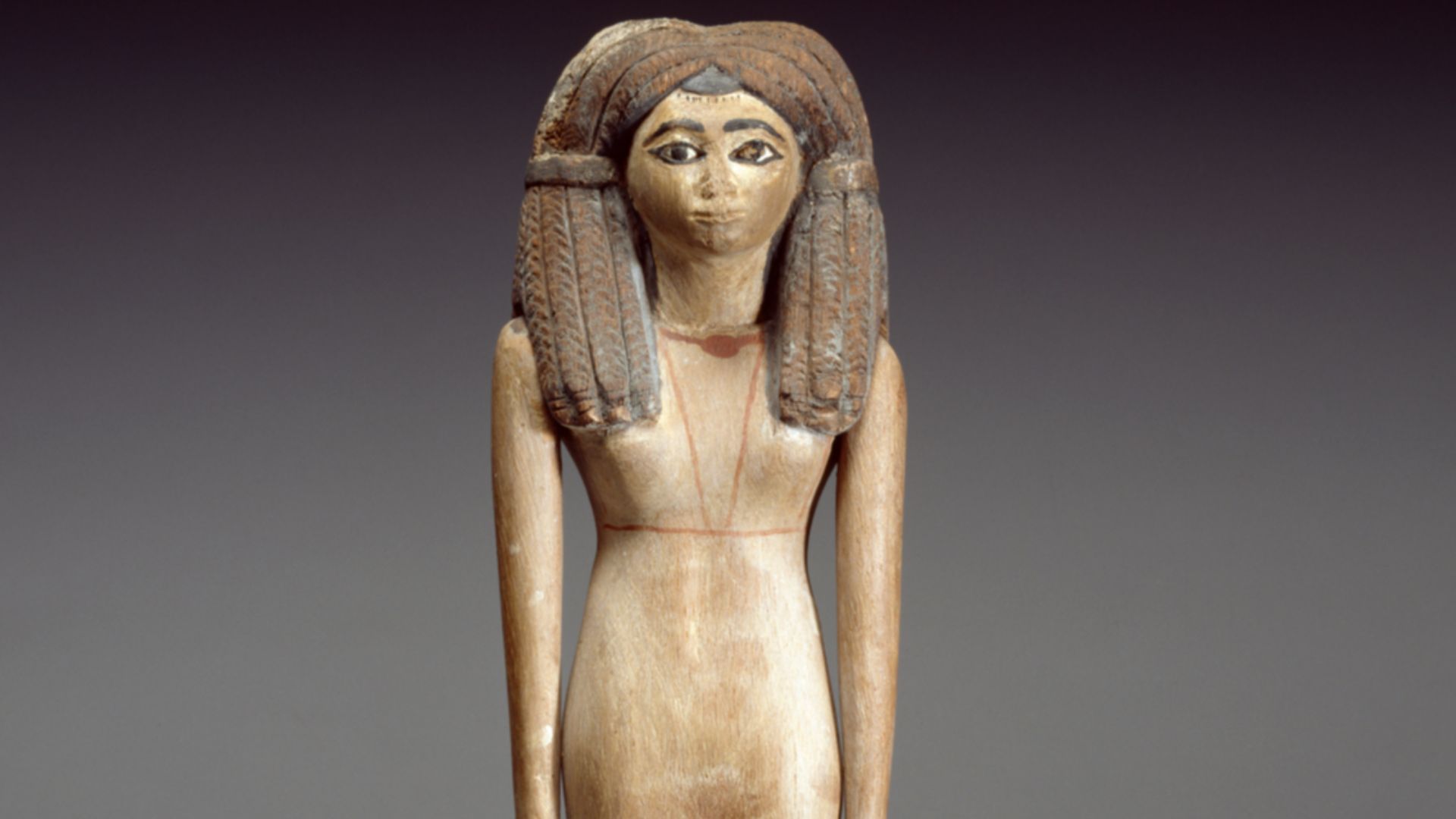 Anonymous (Egypt)Unknown author, Wikimedia Commons
Anonymous (Egypt)Unknown author, Wikimedia Commons
Canopic Jars
The burial chamber also contained canopic jars designed to hold Edi's internal organs, which were removed during the mummification process and preserved separately. These specialized containers were important components of ancient Egyptian burial practices to make sure the body remained complete for resurrection.
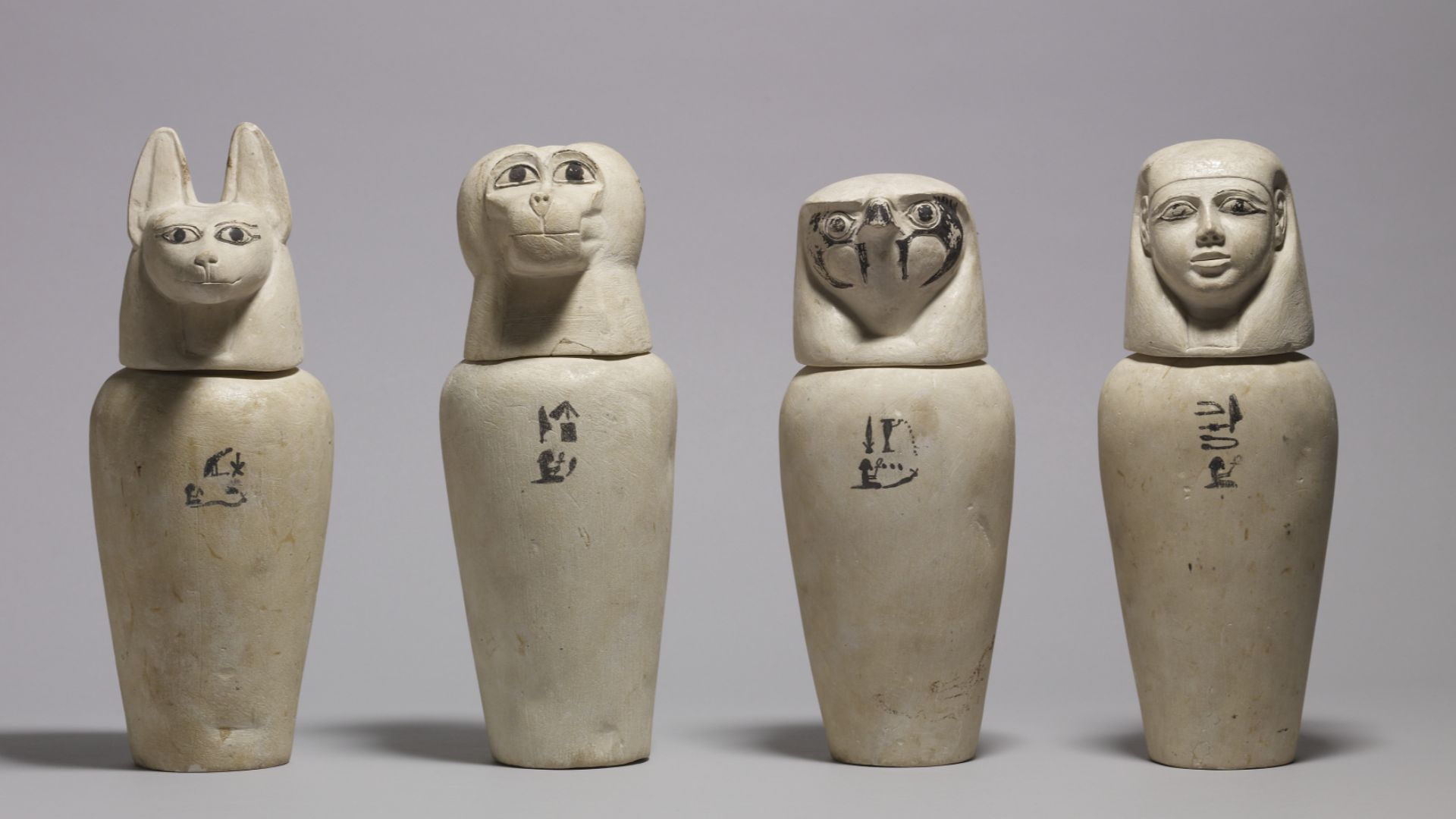 Anonymous (Egypt)Unknown author, Wikimedia Commons
Anonymous (Egypt)Unknown author, Wikimedia Commons
Canopic Jars (Cont.)
Although damaged by ancient tomb robbers, the remaining jar fragments still provided evidence of proper mummification procedures. By the Middle Kingdom, canopic jars typically featured lids shaped like human heads, a style that replaced the earlier plain or disc-shaped lids.
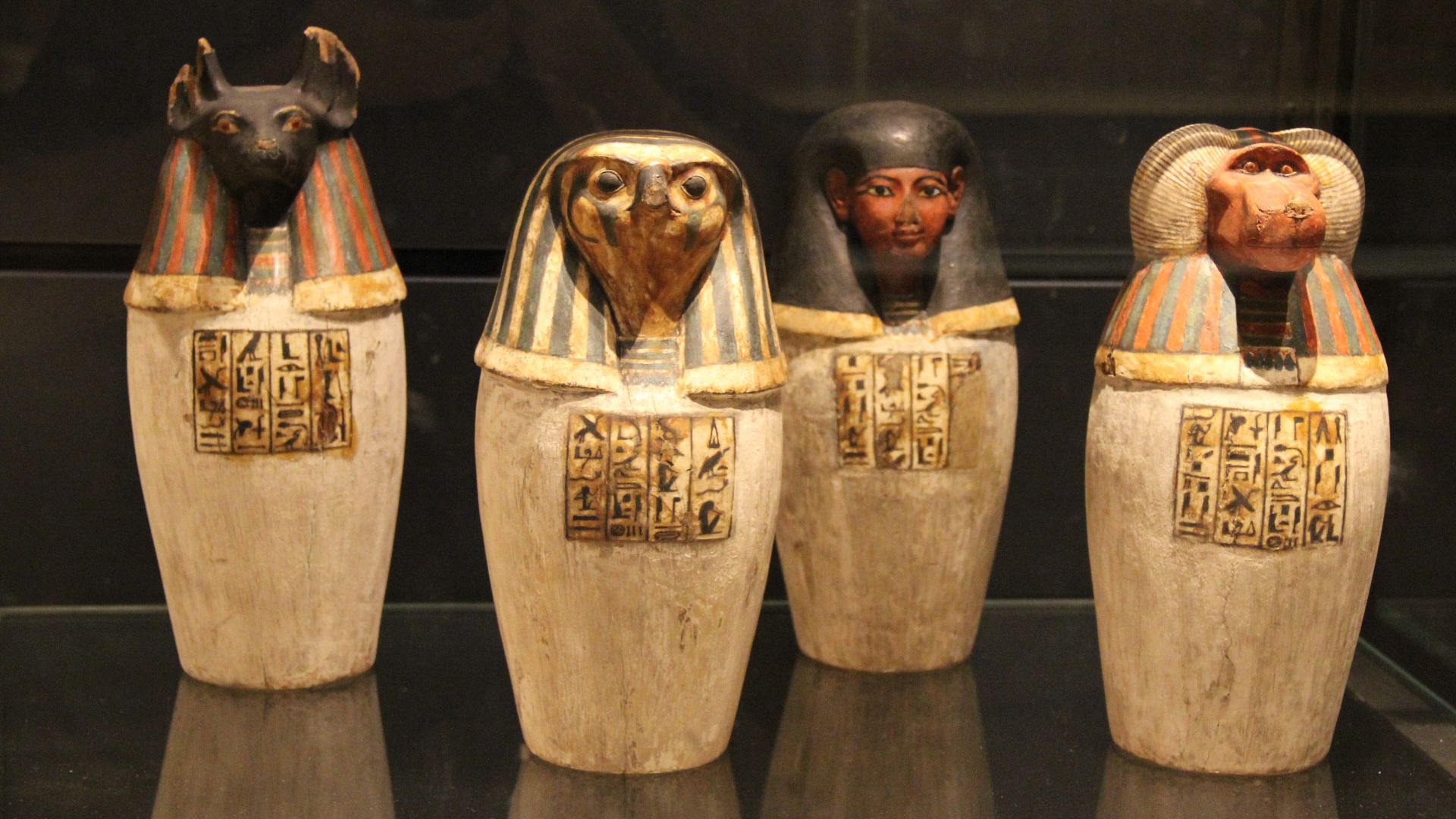 Gary Todd from Xinzheng, China, Wikimedia Commons
Gary Todd from Xinzheng, China, Wikimedia Commons
Four Sons Of Horus
These items came in sets of four, each associated with one of the Four Sons of Horus, who protected specific organs. These include Imsety (liver), Hapy (lungs), Duamutef (stomach), and Qebehsenuef (intestines. In the Late Period, they were sometimes included in tombs even without actual organs.
Burial Goods
Additional grave goods included a dagger, wooden statues, and various ceremonial objects that reflected this individual’s high social status and family wealth. It is said that daggers and Weapons symbolized protection, power, and the ability to defend oneself after they leave Earth.
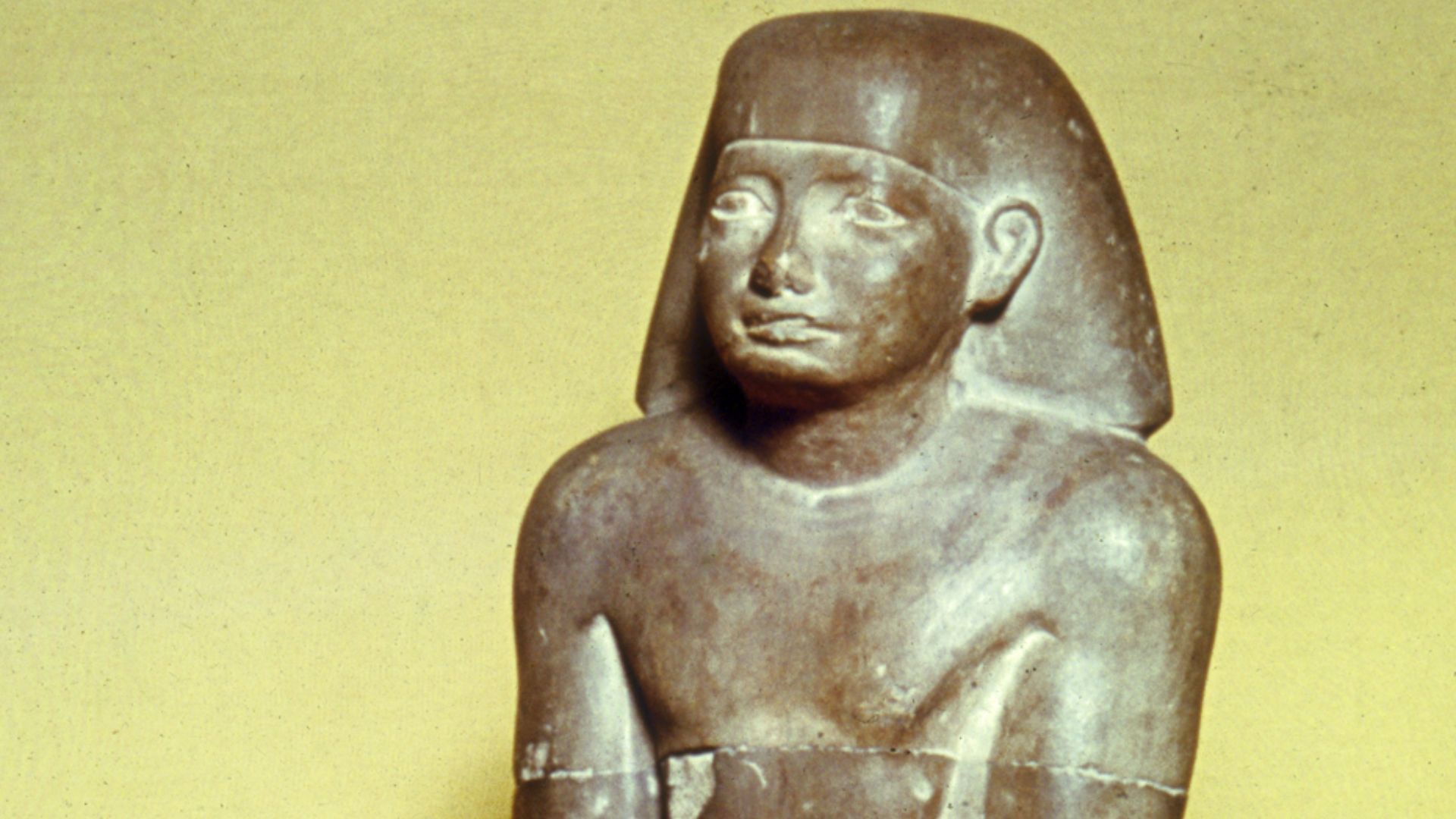 Anonymous (Egypt)Unknown author, Wikimedia Commons
Anonymous (Egypt)Unknown author, Wikimedia Commons
Ancient Robbery
Her tomb suffered damage from ancient looters who ransacked the burial chamber searching for valuable metals and jewelry during antiquity. The thieves removed all gold, silver, and precious stone artifacts, focusing only on items with immediate monetary value. Fortunately, they showed no interest in wooden objects.
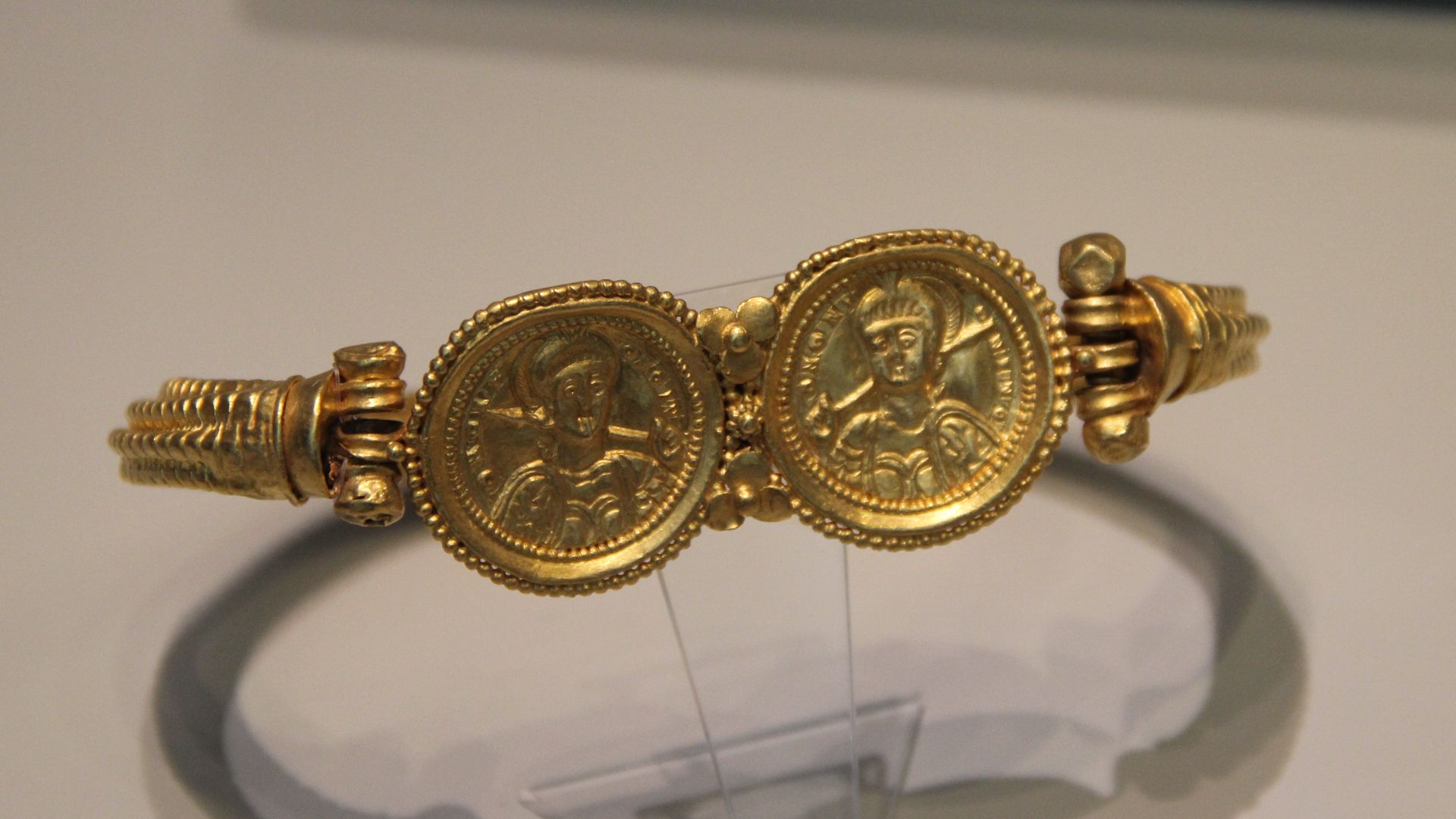 Gary Todd from Xinzheng, China, Wikimedia Commons
Gary Todd from Xinzheng, China, Wikimedia Commons
Skeletal Remains
Despite all this, portions of Edi's skeleton survived in the burial chamber for archaeological analysis. Her preserved bones provided critical biological information about her life, health, and death circumstances. Previous studies of Egyptian mummies and skeletons have identified conditions such as arthritis and fractures.
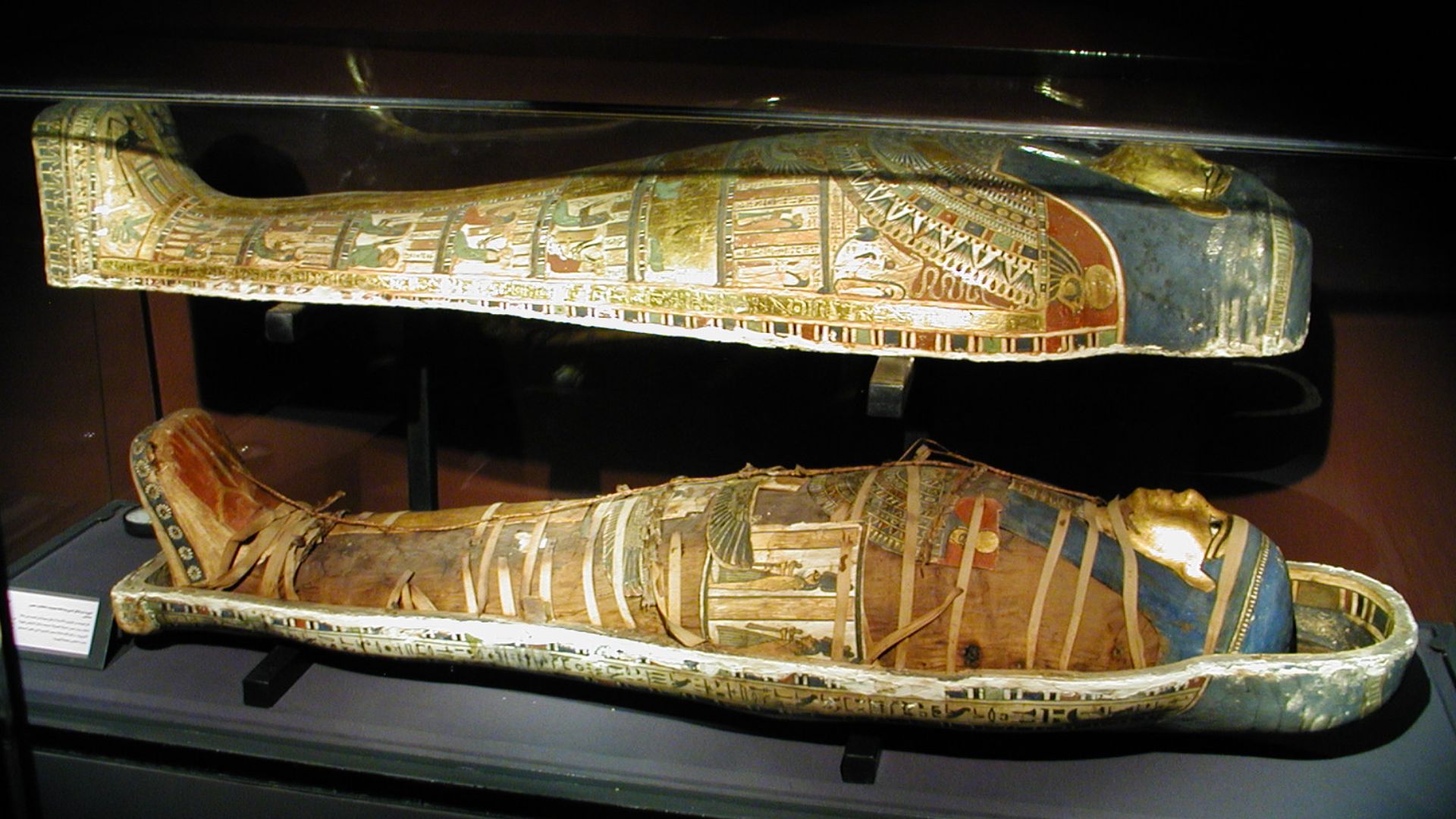 Gérard Ducher (user:Néfermaât), Wikimedia Commons
Gérard Ducher (user:Néfermaât), Wikimedia Commons
Age Analysis
Preliminary scientific examination of these remains revealed that she died before reaching age 40, suggesting she lived a relatively short life by modern standards. This age determination was based on analyzing bone development, tooth wear, and cranial suture closure, which provide reliable estimates of ancient peoples' lifespans.
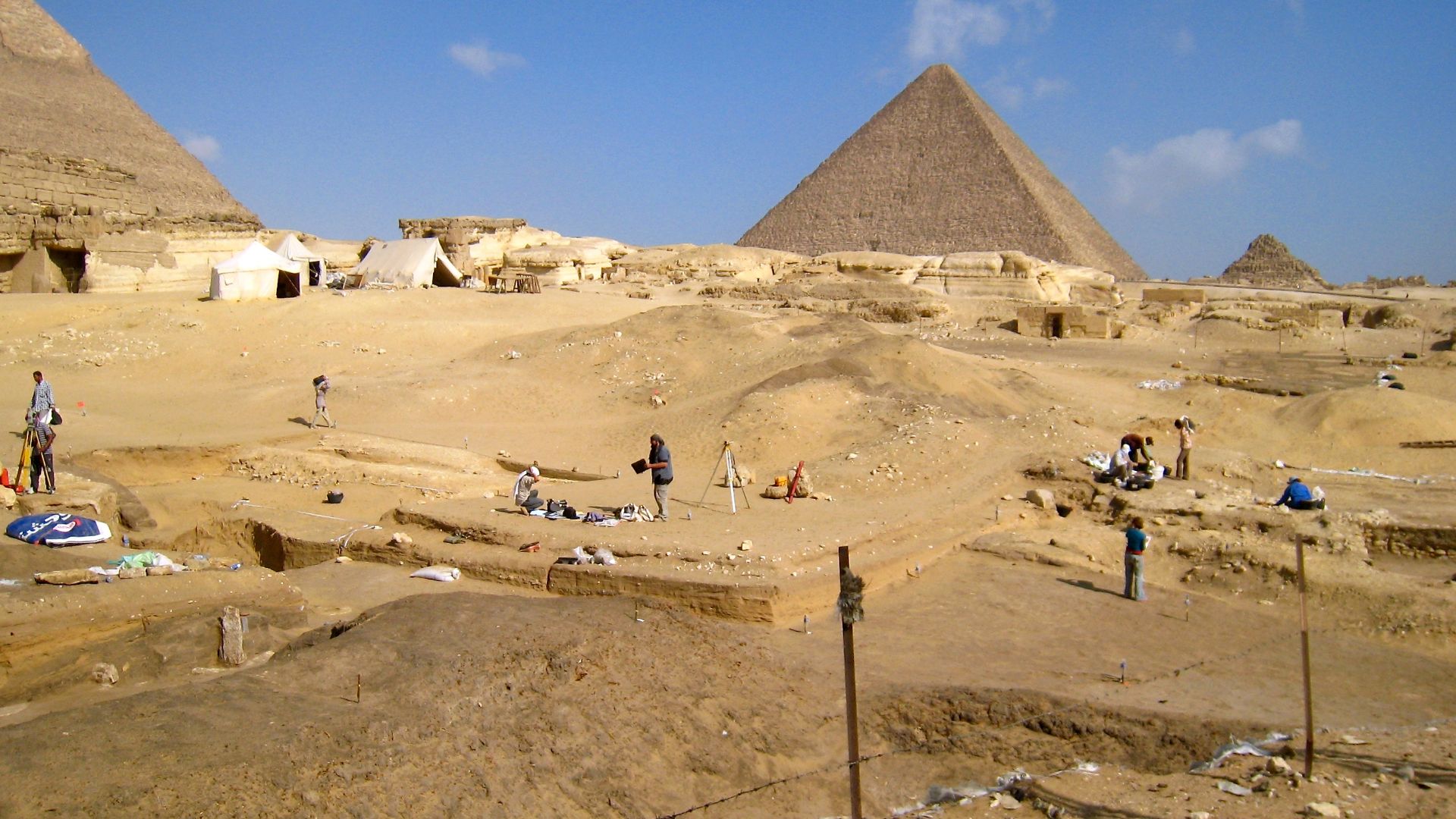 James Byrum from Nowhere, Wikimedia Commons
James Byrum from Nowhere, Wikimedia Commons
Foot Condition
That's not all. Medical analysis of this figure also highlighted that she suffered from a congenital defect in one foot. She was born with this condition and lived with it throughout her life. Such congenital foot deformities include conditions like clubfoot (talipes equinovarus).
 Brachet Youri, Wikimedia Commons
Brachet Youri, Wikimedia Commons
UCLA Assessment
Professor Kathlyn Cooney from UCLA's Department of Ancient Egyptian Art and Architecture described finding two intact Middle Kingdom coffins as “extraordinary”. She mentioned how such discoveries provide invaluable insights into the ideas of the ancient Egyptians regarding mortality.
 Stephen Newton (ManosFate), Wikimedia Commons
Stephen Newton (ManosFate), Wikimedia Commons
Expert Opinions
Francesco Tiradritti, an Egyptology professor at Italy's Kore University of Enna, also suggested that a second figurine might depict Edi's soul emerging from the tomb. Besides, Wolfram Grajetzki, an Egyptologist from London, praised the discovery's proper documentation by a modern archaeological team.
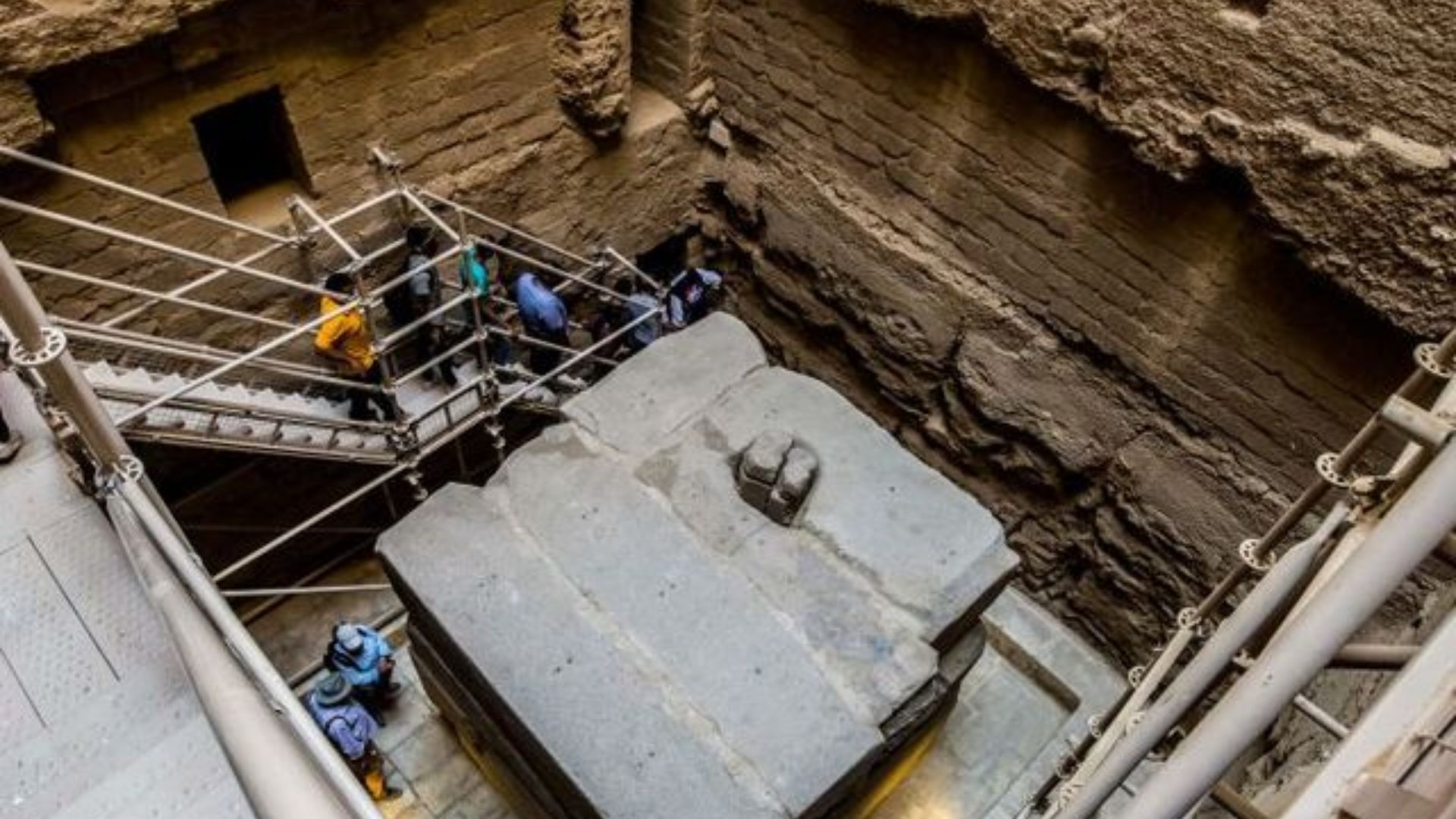 Codecodedly, Wikimedia Commons
Codecodedly, Wikimedia Commons


